






For centuries, people have suspected a full moon in the sky to cause mysterious changes in people. Now, psychiatrists at Indiana University School of Medicine have found deaths by suicide increase during the full moon.
“We wanted to analyze the hypothesis that suicides are increased during the period around full moons and determine if high-risk patients should be followed more closely during those times,” said physician Alexander Niculescu, Ph.D.
Niculescu and his team looked at data from the Marion County coroner’s office in Indiana about suicides that took place from 2012-2016. They found deaths by suicide significantly increased during the week of the full moon, with people over age 55 showing an even higher increase. They also looked at the time of day and months that suicides took place, finding 3 p.m. to 4 p.m. and the month of September to be peak times for suicides.
The team recently published their findings in Discover Mental Health.
“From a clinical perspective and a public health perspective, we found some important take-home messages in this study,” Niculescu said. “Highrisk patients should possibly be followed more closely the week of the full moon, during late afternoons and perhaps the month of September.”

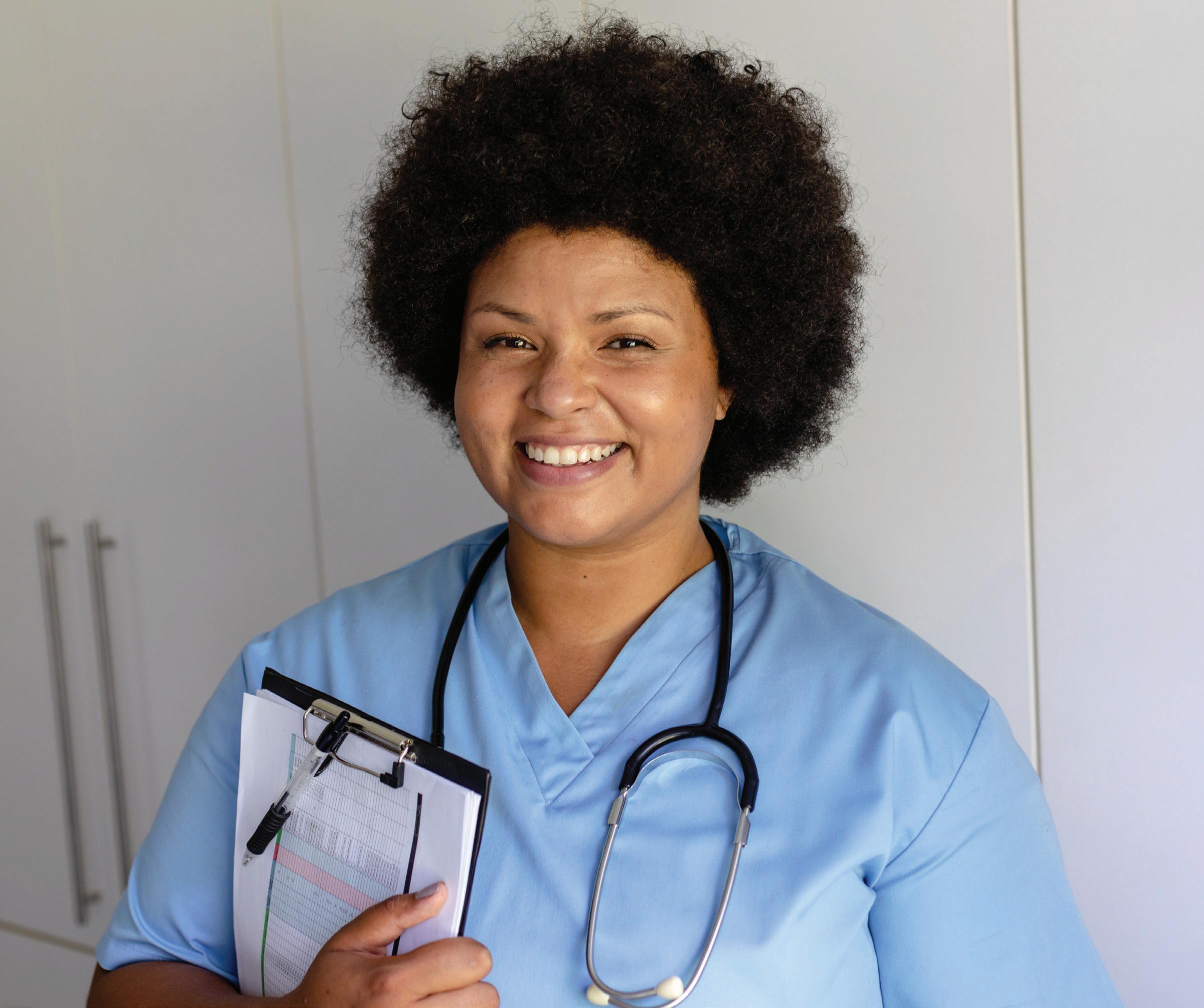

Niculescu and his team previously developed blood biomarker tests for other mental health conditions (anxiety, depression, and post-traumatic stress disorder) and for pain. Using blood samples previously taken by the coroner from some of the people, the team was able to see which biomarkers were present.
“We tested a list of top blood biomarkers for suicidality that we identified in previous studies,” Niculescu said. “The biomarkers for suicidality that are predictive of death by suicide during full moon, peak hour of day and peak month of
the year compared to outside of those periods appear to be genes that regulate the body’s own internal clock, so called ‘circadian clock’. Using the biomarkers, we also found people with alcohol-use disorder or depression may be at higher risk during these time periods.”
Niculescu said the increased light from the full moon could be what leads to the increase in suicides during that period. Ambient light plays a major role on the body’s circadian rhythm, which is the natural 24-hour cycle our bodies follow to regulate when we are asleep and when we are awake. Moonlight could be impacting people at a time when it should be darker.
“The effect of ambient light and body clocks in suicide needs to be studied more closely, along with how people sleep and their exposure to light,” Niculescu said. “Changes in light can affect vulnerable people, in conjunction with other risk factors.”
As for the other two peak periods for suicides, Niculescu said the peak of suicides from 3 p.m. to 4 p.m. could be related to stressors throughout the day as well as a decrease in light beginning to occur that day, causing a lower expression of circadian clock genes and cortisol. And in September, many people are experiencing the end of summer vacations, which could cause stress, as well as seasonal affective disorder effects, as daylight decreases during that time of year.

Associates:One of his jobs is to bring cancer clinical trials to CNY. He talks about this and his career and why he changed his major from computer science to medicine.
Q: Give us an overview of your work with Hematology-Oncology Associates of CNY.
A: I’m a general hematologist and medical oncologist here at the practice. I’ve been here for three years, but I’ve been practicing for more than 10 years. One of the things I do is see patients with a variety of blood disorders and cancers. I’m also the director of our research department, and am working to bring clinical trials to people in this community.
I really enjoyed my time training in hematology and oncology with hospitalized patients. And, ultimately, started doing a lot of rotations in clinics. I just really enjoyed it. I liked that I got to deal with a variety of medical problems and organ systems within the body. And I became very interested in the science of cancer medicine.
Q: Have you found there to be any transferable skills from computer science to medicine?
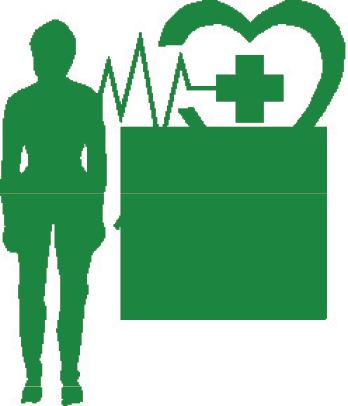
things that attracted me to research was finding new mechanisms to treat cancer.
Q: Did the pandemic cause issues so far as diagnosing cancer in a timely manner? Have you seen changes in the rates of cancer diagnoses?
A: I think there are a few trends overall. One of those trends is we’re seeing malignancies in younger people. The big example there is colorectal cancer. For the past 20 years we’ve seen a 2% increase each year in people under the age of 50, which is one of the reasons we start screening for colorectal cancer at a younger age. So it feels like we’re seeing more cancer in younger people. In the context of the pandemic, I feel like it’s caused a lot of delays. It’s harder to get things done quickly. So, where something took maybe a week to set up before the pandemic, things are now taking longer due to staffing issues. And, of course, during the pandemic people pushed back a lot of screening. So we’re seeing more people presenting at later stages of disease. If they’d been screened sooner, or presented to get their symptoms looked at sooner, they waited and showed up with more advanced diseases. That was certainly a concern during the pandemic and it seems to be panning out with what we’re seeing in our practice.
to a Western society, their incidences increase. When you see this kind of immigrant effect, it strongly implies that it’s exposure-related.
Q: When it comes to fiber, is there a difference between natural fiber and refined fiber so far as colorectal cancer risk goes?
A: I think it’s mainly whole fiber from plant-based foods. You can get fiber in highly processed foods, but I think it’s better to get it from the food itself. We get a bit fixated on getting certain nutrients through pills. “This vitamin is in an apple, so let’s make a pill that isolates the vitamin.” But that vitamin doesn’t always pan out as well as just eating an apple.
Q: Do you find screenings are effective as a mitigation for these increased incidences?
A: Absolutely. These screenings can prevent the cancer. So, for example, it doesn’t just grow out of anywhere. Colon cancer starts with an abnormal polyp in the mucous membranes of the colon and that polyp starts to grow more and more mutations over time, and that polyp starts to form more and more mutations and turn into invasive cancer, which can become life-threatening. So if you have a colonoscopy and you find this polyp, and you remove this polyp, then the cancer never had a chance to start. So colorectal screenings are extremely effective. The same goes for mammograms, which detect lesions before they turn into invasive cancer. Even when I see patients for non-cancer-related issues, I still harp on them about getting their screenings because it’s just so important. We’re happy to take care of people with cancer, but we’d rather not have to see them in the first place. We’d rather they never develop cancer.
Q: What brought you back to Syracuse?
A: Family. I moved to Syracuse originally in 1989 and it became home. I’ve left a couple times, but it keeps drawing me back. Sometimes moving from Virginia to Syracuse sounds like a counterintuitive move, but I think it’s a great place to raise kids.
Name: Steven Duffy
Q: When it comes to the increase in colorectal cancers specifically, what do you think is going on there?
A: That’s a great question. In my personal opinion, without being too controversial, is that the standard American diet is a big factor. In certain other countries we don’t see as much of this. It could also be due to other exposures that we’re seeing in society. A lot of people worry it could be diet related, though. Some think it’s due to a decrease in fiber intake, others an increase in animal protein intake. One of the things that we see across the world is that people who eat diets rich in fruits, vegetables, legumes have lower incidences than people who eat diets high in processed foods and processed meats in particular. There are even studies that show if you take people from one part of the world and then move them
Position:Hematologist-oncologist and director of research at Hematology-Oncology Associates of CNY
Hometown: Syracuse
Early Life: Moved with his mom from Dublin, Ireland, to Syracuse at age 11
Education: Medical degree from SUNY Upstate Medical University; residency in internal medicine at SUNY Upstate; fellowship in hematology-oncology, SUNY Upstate
Career: Worked at busy practice in Richmond, Virginia, where he was involved in cancer research, teaching and the development of multidisciplinary cancer care teams

Affiliations: Crouse Hospital; St. Joseph’s Hospital
Organizations: American Society of Clinical Oncology; American Society of Hematology
Family: Wife (Michelle), son (Ian), daughter (Lily)
Hobbies: Hiking, snow activities, exercising
‘One of the things I enjoyed most about computer science was problem-solving. In computer science it’s fixing a broken machine or debugging code. In medicine, your patients come to you with a problem and you try to figure out how everything ties together. Their symptoms, new developments. So it’s also a lot of problem-solving, which is something that attracted me to this field.’
Nearly half of adults in the U.S. have high blood pressure, says the American Heart Association. The tricky part is that a lot of us don’t know we have it because, even when our numbers are too high, we don’t feel any different.
That’s why it’s important for all of us, of all ages, to understand high blood pressure.
We asked physician Cynthia Jones, medical director of Mosaic Health Utica and board member of the American Heart Association of the Mohawk Valley, to discuss high blood pressure and hypertension.
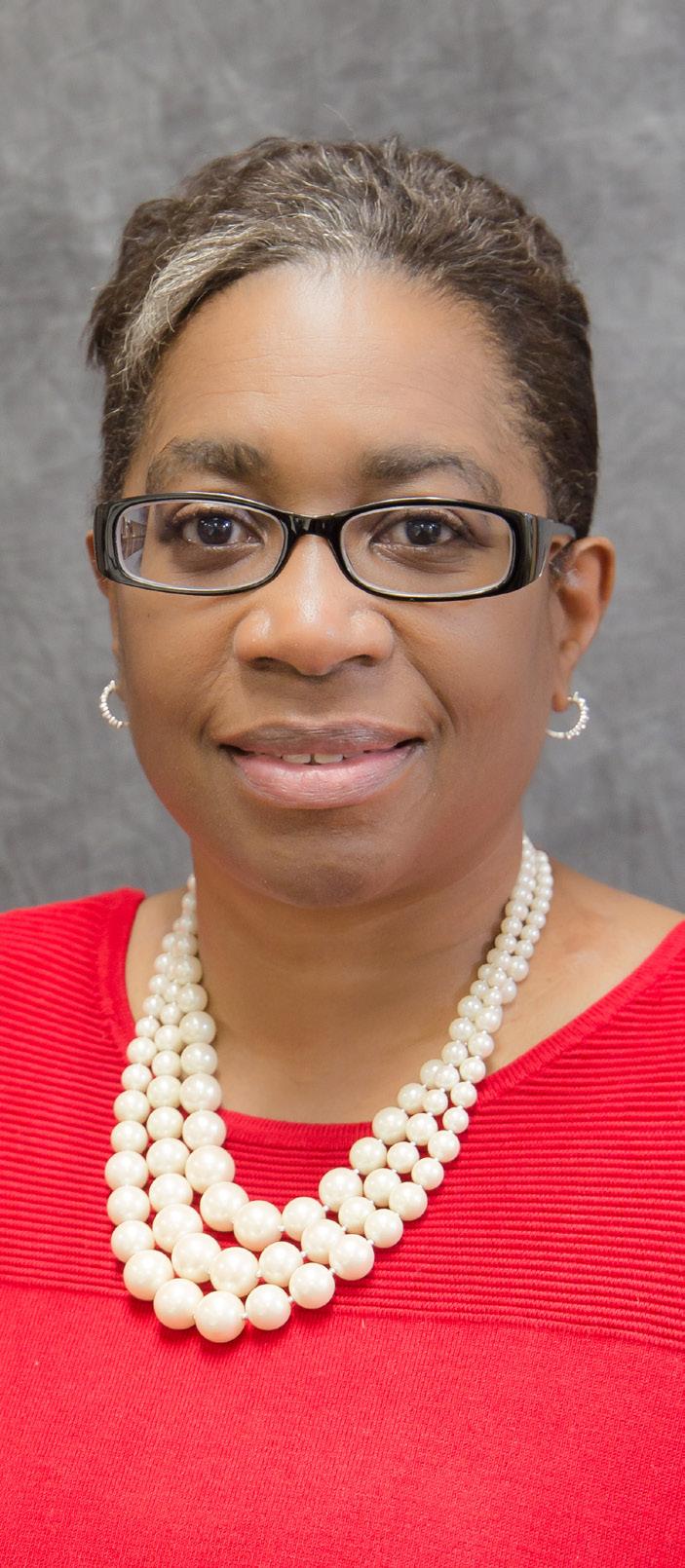
“High blood pressure is a leading risk factor for heart disease and stroke,” said Jones. “Because it often has no symptoms, it’s known as ‘the silent killer.’”
The main way that high blood pressure causes harm is to increase the work of your heart and blood vessels, making them work harder and less efficiently. This can damage your blood vessels, making them weak, stiff or narrower, which can harm important organs of your body: your heart, kidneys, brain and eyes, she added.
If you don’t know you have high blood pressure, and don’t take steps to control it, in addition to a heart attack or a stroke, it can cause heart failure, kidney disease, loss of vision or sexual dysfunction.
“To survive and function properly, your tissues and organs need the oxygenated blood that your circulatory system carries throughout the
body,” said Jones. When your heart beats, it creates pressure that pushes blood through a network of blood vessels, including arteries, veins and capillaries. This pressure — blood pressure — is the result of two forces: The first force (systolic pressure) occurs as blood pumps out of the heart into the arteries. The second force (diastolic pressure) is created as the heart rests between heart beats.
Over time, the force and friction of high blood pressure damages the delicate tissues inside the arteries. In turn, LDL (bad) cholesterol forms plaque along tiny tears in the artery walls, signifying the start of atherosclerosis.
• The ingredients in many decongestants.
• Salt: The Heart Association recommends a maximum of 2,300 mg of salt per day, with the ideal being 1,500.
• Alcohol: Limit your intake to one drink per day for women, two for men.
• Hot tubs and saunas: People with high blood pressure should not move back and forth between cold water and hot tubs or saunas as this can cause an increase in blood pressure.
• Weight gain: Losing as little as 10 pounds can lead to increased health benefits. Being overweight is one of the main causes of high blood pressure.
• Sitting: Even a few minutes of activity for those who sit most of the day can lower blood pressure in those with Type 2 diabetes.
• Stress can cause a steep rise in blood pressure.
• Dehydration.
Your doctor may recommend medication in addition to lifestyle changes as part of your treatment plan. You may need to try different medications or use two or more in combination.
This ad will appear at the classification of:






The more the plaque and damage increases, the narrower (smaller) the insides of the arteries become — raising blood pressure and starting a vicious circle that further harms your arteries, heart and the rest of your body. This can ultimately lead to other conditions ranging from arrhythmia to heart attack and stroke, Jones added.
Your blood pressure reading has two numbers: systolic the top number, diastolic the bottom number.
Lifestyle changes that help lower blood pressure include lose extra pounds if necessary, stay active, reduce salt, limit alcohol, quit smoking, reduce stress, get a good night’s sleep.
MP Order Proposal#
Last year, the AHA teamed up with several local organizations to launch the Mohawk Valley Blood Pressure Initiative. The goal is to get self-monitoring blood pressure monitors to residents.

Date:
Systolic is pressure on your arteries when your heart beats; diastolic is the pressure between beats. Your doctor considers both numbers to determine if you have high blood pressure and, if so, what treatment to use.
For a diagnosis of high blood pressure, you need to have elevated readings on at least two separate occasions. Elevated is when the systolic is over 140.
Factors that increase your risk of having high blood pressure include older age, genetics, being overweight, being inactive, high salt diet, too much alcohol.
The AHA recommends that people with high blood pressure monitor their blood pressure at home, to help your health care provider determine if treatment is working.
For information about the program, email heartofutica@heart.org or call 315-580-3956.
Editor & Publisher: Wagner Dotto • Associate Editor: Stefan Yablonski
Contributing Writers: Barbara Pierce, Deb Dittner, Gwenn Voelckers, David Podos, Deborah Jeanne Sergeant, Anne Palumbo, Daniel Baldwin
Advertising: Amy Gagliano: 315-402-3370 • Email: amyIGHmv@gmail.com
Layout & Design: Angel Campos-Toro • Office Manager: Allison Lockwood

The trustees of the Medicare hospital trust fund have projected the fund will be depleted by 2031. Incoming Medicare taxes after that will be insufficient to rebuild a reserve. Thanks to the InflationReduction Act, which fixes monthly insulin costs at $35 and authorizes Medicare to negotiate a few drug prices effective 2026, the fund would have been depleted three years sooner in 2028. So that begs the obvious question: if the projected savings in insulin costs and a dozen or other drugs can push the depletion date out three years, why not let Medicare negotiate all drug prices? Answer: the drug lobby.
Artificial intelligence, like ChatGPT (Generative Pretrained Transformer), is being met by providers with the same guarded optimism and trepidation as the now firmly entrenched electronic medical record.
But unlike the electronic medical record, which was slowly and painfully incorporated into healthcare over several years, chatbots will become an integral part of healthcare seemingly overnight.
Google’s chatbot scored 85% on a practice medical licensing exam. Another chatbot scored 90% on a law bar exam.
As with the electronic medical record, if AI is not used properly, there are concerns over privacy, equity, safety and quality. Proponents of chatbots in healthcare see win-win scenarios for providers and
their patients.
Chatbots will relieve providers and their support staff of several menial administrative tasks, thereby freeing them to spend more time with their patients and critical clinical issues.
Industry experts believe AI will increase access, improve the patient experience, lower costs and prevent many heretofore frustrated physicians and nurses from leaving healthcare altogether.

Basically, chatbots can: automatically refill prescriptions; provide basic, necessary medical information; check symptoms; assist with coverage and claims; instantly respond to queries; recommend wellness programs; provide medical assistance; and schedule appointments. And all this 24/7.

According to a survey of 31,000 full time physicians by Doximity, the average physician compensation declined 2.4% last year. (It went up 3.8% in 2021.) The decline occurred despite a predicted MD shortage, a significant rise in operating costs, and MD burnout. According to the AMA, when adjusted for inflation, Medicare reimbursement declined 22% between 2001 to 2012. (Commercial carriers tend to follow suit.)
According to Doximity, the highest paid specialties are:
• Neurosurgery, $746,000
• Thoracic surgery, $668,000
• Orthopedic surgery, $605,000
• Plastic surgery, $539,000
• Oral and maxillofacial surgery, $538,000
• Vascular surgery, $534,000
• Cardiology, $527,000
• Radiation oncology, $516,000
• Gastroenterology, $486,000
• Radiology $485,000.
Even though 90% of us have health insurance, many are saddled with increasingly higher deductibles and co-pays as employers continue to shift more of the costs to employees. Not surprisingly, most consumers are clueless about their benefits and out-of-pocket costs until they are confronted with a health crisis. Healthcare in our country is confusing, frustrating and terribly expensive. Healthcare debt is still the No. 1 reason for bankruptcy. A recent survey of over 1,000 consumers by a national consulting firm revealed:
• Over 50% of respondents are concerned about their ability to pay for a major healthcare event;
• 65% said they are not able to afford a new $250 a month expense to manage a chronic condition and related medications;
• 64% said they would delay or skip necessary care if they were unsure of their ultimate out of pocket responsibility.
Ironically, putting off care to save money can result in even higher costs to patients as symptoms not treated early worsen over time until there is an acute medical crisis. This non adherence eventually impacts quality, outcomes, productivity and even provider burnout. Hospitals have been slow to display mandatory pricing information on their websites. Once in compliance, this should help consumers calculate what their insurance will pay and then what they will owe out of pocket for selected procedures.
According to an analysis by the Robert Wood Johnson Foundation, health insurance premiums on the federal exchange increased about 3.4% this year. The enhanced subsidies provided by the federal government resulted in record breaking enrollment. The number of insurance companies on the exchange increased to 232. Premiums on the exchange actually dropped 2.2% from 2019 through 2022. The reasons for the 3.4% increase this year are: high inflation beginning last year; uncertainly over enhanced income-based subsidies (the Inflation Reduction Act eventually continued the enhancement through 2025); the end of continuous coverage requirements through the pandemic; uncer-
tainty over the lingering impact of COVID19 and newer strains. Most commercial insurance premiums increased for the very same reasons.
Uber has been providing non-emergent medical transport (NEMT) since 2018. Uber’s newest venture is delivering prescriptions, over-the-counter drugs and healthy foods. Providers will use the same Uber platform they already use to arrange rides for their patients. Patients who lack their own transportation are more likely to be non compliant by missing medical appointments or by not taking their meds.
Uber ride and prescription delivery services are be- coming more popular with providers under value-base, contracts which reward providers for positive patient outcomes.

Health Affairs analyzed over 3,700 hospital webpages and found just about all of them incurred at least one third-party data transfer. Specifically, 98.6% had at least one third-party data transfer and 94.3% had at least one third-party cookie. The median number of third-party transfers was a whopping 16. The leading culprits were Alphabet 98.5%; META 55.6%; Adobe 31.4%; and ATT 24.6%. Angry consumers, feeling their privacy has been violated, have filed individual and class action lawsuits against hospitals for sharing their personal information with these website trackers.
The Affordable Care Act mandates that insurers offer free prevenservices including screening for breast cancer, cervical cancer, diabetes and vision testing for preschoolers. Inexplicably, judge Reed O’Connor, the same judge who tried to kill the entire hugely popular act in 2018, has ruled that some of the mandated free preventive services are illegal. Really? Who brought this suit? Just about every commercial carrier has vowed to continue with free preventive services because it saves lives and money in the long run.

George W. Chapman is a healthcare business consultant who works exclusively with physicians, hospitals and healthcare organizations. He operates GW Chapman Consulting based in Syracuse. Email him at gwc@gwchapmanconsulting.com.

Beating cancer may be the greatest health achievement and biggest relief for any cancer patient, as they go through numerous checkups, surgeries and chemotherapies.
Problem is, some cancer survivors may have to face more challenges and have more health-related problems after their treatment.
“Cancer patients often deal with multiple issues,” said Dean Moffo, survivorship wellness manager for the MVHS Cancer Center Survivorship program. “Inside the cancer survivorship center, everyone there have been diagnosed or had cancer, in the past, but now, due to hormone therapy and other issues, they may be dealing with weight loss, sexual disfunction or cardiovascular disease. They might have other reoccurring issues that might not be cancer. Everyone here has or had cancer, but may be dealing other issues now.”
MVHS is opening its very own survivorship clinic —named the MVHS Survivorship Program — at Faxton Campus in Utica. No open date has been set, according to Moffo.
“The survivorship clinic grew out of a need for this type of service for our local community,” Tara Markert, communications specialist at MVHS, said. “It was born as a part of MVHS to serve our region. The idea was generated here at the Mohawk
Valley Health System because there was a need for survivorship, support and services for people who are diagnosed with cancer and beyond.”
MVHS’s survivorship clinic is both an actual clinic and a wellness program, according to Moffo.
“There are multiple facets to the survivorship program and center,” Moffo said. “There is a clinical portion. We do have an oncology nurse practitioner inside the program. You’ll be seeing the nurse practitioner and talking with her. Then there is a programmatic portion which includes the wellness. We do have a wellness center, which we’ll be putting the survivorship members [cancer survivors] through a guided wellness program specific around their customized needs and wants. If wellness is agreed upon, a nurse will refer the patient to the wellness program where everyone first meets with me; we introduce you to the wellness, we set up their program; and we go from there.”
People who have or had been diagnosed with cancer are eligible for MVHS’s survivorship program. The nurse practitioners and staff, at this program, help and assist the cancer survivors, who are dealing with other health issues after their treatment.
“We cover a lot of topics, inside the survivorship program, whether it’s pain, fatigue, fear or living with
uncertainty of cancer, memory issues, sexual disfunction, weight loss, and breathing issues,” Moffo said. “We do provide resources around sexual dysfunction, memory loss, and other issues [cancer survivors face post-treatment]. We at MVHS have a big team here, so if someone was determined, based on a nurse practitioner, they may need to see a mental health counselor, [The nurse] can put that referral for them to go see that person. If they need a dietitian, we set them up with a dietitian. If they need to go back to their specialist for whatever reason, we can set that up with them. We help them with those other health issues inside the survivorship center.”
They provide cancer screenings and regular checkups. The clinic’s nurses and staff also give the survivors health-related advice. Tips that could improve the survivors’ health and prevent their cancer from returning.
“[Cancer survivors will] get a review of their medical history,” Moffo said. “A bunch of health education, not only for prevention but around other general education topics. We’ll give them healthy lifestyle recommendations that will help them reduce risk for cancer. We have screening guidelines for other cancers and we have follow-up testing. We do offer a lot both around the medical
and wellness portion. We educate and provide the resources to reduce cancer risk as well as to reduce further health deterioration.
Moffo and the rest of the MVHS staff are in the final stages of opening their survivorship clinic, despite not having an opening date.

“Our nurse practitioner is currently doing our consultations with patients and taking referrals into the survivorship program,” Moffo said. “We are in the final stages of the equipment and everything getting set up, and then we’re working on just figuring out the actual opening date.”
The clinic will not move to the new downtown Utica [Wynn] hospital. Faxton Campus will still be up and running, even after the opening of Wynn Hospital, according to Markert. The survivorship clinic will stay at Faxton.
Moffo said that the goal for his and other survivorship clinics is to make the survivor’s transition out of cancer as easy and as comfortable as possible.
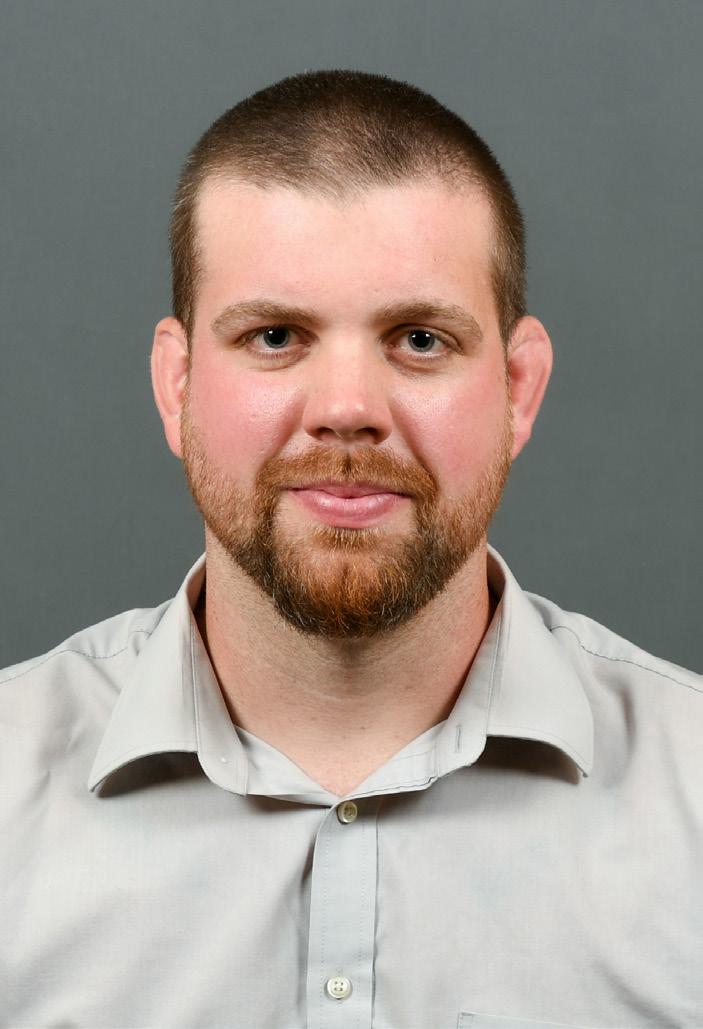
“We’re trying to better their health,” Moffo said, “because after the transition of treatments, sometimes it’s very hard to adjust back to normal life because they were going from going every week to get certain treatments, to now they have this time back, and it’s a hard thing to deal with. So, we’re providing the support around that transition and making them have a healthier lifestyle. We have multiple points of support that we can provide to them and we address multiple aspects of health and wellness inside the survivorship program.”
Survivorship clinics offer checkups, testing, health classes and other services to all cancer survivors, so that they can live well and stay healthy after their treatment, according to Mayoclinic.org. They aim at improving the overall health and well-being of cancer survivors.
C. I can’t imagine traveling solo.
The Oxford English Dictionary defines contentment as "the state of being happy and satisfied."
This dictionary definition sounds like a nice way to feel, doesn’t it? Oh, if we could just snap our fingers and be content with who we are and what we have.
Wouldn’t life be grand?
I’ve had the privilege of meeting and talking with a lot of women and men who live alone, and our conversations often turn to the subject of contentment: how to find it, how to keep it, and how to find it again once it has been lost.
Those on their own often feel a lack of something in their lives, and many have trouble letting go of a craving for things to be different.
I know. I’ve been there.
For years after my divorce, I had trouble seeing the good in myself and in my life. But with time, intention and practice, I was able to stop yearning for what I didn’t have and start appreciating what existed right in front of me.
It all began with an important first step — taking a hard look at myself.
While I’m no expert in survey design, I created the simple non scientific quiz below to help you assess where you are on the road to contentment.
Your results may light a new and
hopeful way forward.
Circle the choice that best answers the questions below:
1. If asked, can you readily name your own positive personal qualities? How many come to mind?
A. 5 or more.
B. 1 to 4.
C. Nothing really comes to mind.
2. How would you describe your home?
A. Very “me” — I’ve made it my own.
B. It’s fine. I keep meaning to redecorate, but I never get around to it.
C. My home looks as tired as I feel.
3. How would you describe your success in letting go of old ways of thinking and of negative thoughts or behaviors that keep you anchored in the past?
A. I live in the present; it’s full steam ahead!
B. I still wallow in self-pity from time to time.
C. I can’t let go of regrets and obsess about the past.
4. Could you imagine planning a trip by yourself and traveling alone to a new or familiar destination?
A. In a heartbeat.
B. Maybe someday.
Over my years in practice, there has been an increase in those complaining of allergy symptoms consisting of sinus congestion, post-nasal drip, sore and itchy throat, cough, headache, runny-stuffy-itchy nose, sneezing and watery eyes.
The cause is not always front and center as some only complain with seasonal weather changes whereas others complain year-round, and still others complain after ingesting certain foods, which may cause reactions such as headache, dizziness, skin rash, itching, swelling and, most serious, anaphylaxis.
Whatever category you fall into, it’s very important to get to the root cause of your symptoms and not just treat it willy-nilly.
Your gut microbiome and your immune system and allergies are all connected. More than 80% of your immune system lies in the gut.
The gut microbiome consists of bacteria, yeast and other organisms which are critical in determining health. Reactions or sensitivities appear to be increasing yearly therefore a change in the way you eat (feed your gut) needs to be looked at more closely. Optimal nutrition promotes overall health and a healthy gut
microbiome.
5. Does going alone to a café for a cup of coffee or grabbing a bite to eat at a local restaurant feel comfortable — even enjoyable?
A. I do it all the time.
B. Occasionally, but I feel self-conscious.
C. I’m just not ready.
6. Do you exercise, get enough sleep, and stay on top of health screenings?
A. Of course!
B. A little, but I could do more for myself.
C. Sadly, I’ve neglected my health and fitness.
7. How often do you pamper or reward yourself by taking some time just for you or by purchasing that little something special you’ve had your eye on?
A. As often as I can.
B. I tend to put others’ needs before my own.
C. I can’t remember the last time I pampered myself.
8. Can you imagine your life without a special someone on your arm?
A. I would enjoy sharing my life with someone special, but I could also be perfectly content with my "family of friends."
B. Maybe, but not for long; I feel incomplete without a "one and only."
C. Life doesn't feel worth living when I'm not in love.
Calculate your total points using this scale:
3 points for each A answer
2 points for each B answer
1 point for each C answer
By Deborah Dittnerwithout proper digestive health, the other systems of the body become imbalanced.
8 points: Contentment may feel elusive at the moment-beyond your grasp. But it can be found. You may benefit from talking with a professional counselor or spiritual adviser. Help and encouragement might also be found in grief support groups and other gatherings — in person or online — that offer emotional support and practical advice.
9-15 points: You experience feelings of contentment, but you know there’s more to be found. Continue to stretch yourself. Reach out to others. And “try on” healthy pursuits outside your comfort zone. Success and achievement breed contentment. You might also find inspiration and a needed jump-start in workshops, lectures, and retreats devoted to personal growth and development.
16 points: Good for you — what you have is precious. Being content with yourself opens up all kinds of possibilities. It enables you to feel peace and joy, whether you are alone or in a committed relationship. It is an invaluable inner springboard on which you can launch all things imaginable!
Gwenn Voelckers is the founder and facilitator of Alone and Content, empowerment workshops for women and author of “Alone and Content,” a collection of inspiring essays for those who live alone. For information about her workshops, to purchase her book, or invite her to speak, visit www. aloneandcontent.com
Food concerns can consist of the relationship-inflammation to eggs, dairy, gluten, nuts, and more recent, histamine-driven. Other factors, especially for children, influencing health consist of breastfeeding, playing in the dirt, and having pets. The use of antibiotics also plays a role in gut health.
Let’s support your gut health, the possibility of developing allergies, and your overall health as well by introducing some simple steps into your everyday life.
• Eat whole nutrient dense foods including many types of plant fiber such as legumes, nuts, seeds, vegetables and fruits (with the skin on if possible and organic).
• Eat foods rich in bioflavonoids such as blueberries, blackberries, apples and onions as these contain quercetin aiding in a positive immune response.
• Eat foods containing probiotics such as sauerkraut, kimchi, miso, yogurt, kefir, and kombucha. Incorporating a probiotic supplement may also be included when restoring the gut microbiome. Hippocrates said “All disease begins in the gut.” Well…maybe not all disease but
• Avoid the use of antibiotics as this destroys gut health. If an antibiotic is necessary (and in certain circumstances it is), incorporate probiotic foods and supplementation.
• Histamine-driven allergies require the restriction of a variety of certain healthy foods. Some examples (and the list is quite long) include eggplant, avocado, spinach, pineapple, orange, processed meats, lentils, beans, peanuts, processed foods, carbonated beverages, and many, many more.
• Supplementation with quercetin, butterbur, stinging nettles, astragalus, and reishi may be beneficial.
• Acupuncture has been used to support the immune system aiding in the prevention of and treatment of nasal congestion, postnasal drip, sneezing and more.
• Avoiding fragrance in perfumes, dish soap, body wash, laundry detergent, cleaning products and more causes a buildup of toxins in the body causing not only allergy symptoms but other conditions.
• Using a Neti pot a minimum of once daily. Irrigation of your sinus passages will remove pollen, and decrease the thickness of mucus leading to lessen congestion. It is important to wash your Neti pot regularly with a mixture of vinegar and water to
eliminate increased bacteria and/or mold from forming inside the chamber and entering your nasal passages.
• The homeopathic remedy, Allium cepa, is acquired from allium (otherwise also known as onions) decreasing allergy symptoms. The micro doses of allium in homeopathic remedies act as an antihistamine.
• Hydration…water, water and more water! Water will thin out mucus and help to eliminate toxins from the body.
• Provide care and strengthen your immune system by getting quality sleep, moving your body, reducing stress, and eating healthy foods.
Supporting the microbiome and immune health will curb allergies and prevent new allergies from developing. Incorporate any of these allergy fighting strategies into your daily routine and enjoy the warm weather ahead.
Deborah Dittner is a family nurse practitioner and health consultant. Her mission is to transform as many individuals as possible through nutrition and lifestyle changes. www. debdittner.com

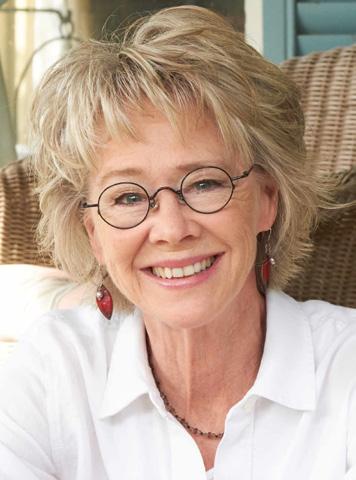
Judy
HauckExecutive director talks about the mission of the faith-based The Good News Center, what it does and how it’s funded
David L. PodosQ: What is the Good News Foundation and how did it start?
A: Well, The Good News Center [also referred to as The Good News Foundation] has been around for just over 30 years. In fact, we just celebrated our anniversary last year. The center was originally founded by two local families, the Schneidermans and the Drozs. The Schneidermans were a family who owned a wholesale grocery distributing business here in Utica. The family through time accumulated enough financial resources that upon retirement they were wondering what to do with that money. That is when their daughter and son-in law approached them and said, “as a faith-based couple let’s see if there is something that we can do to help the spiritual side of people right here in our local community.”
Q: That is quite incredible. So, through the generosity of both of these families the center was created and is still sustained by that generosity that was given more than 30 years ago?
A: Yes, it is quite incredible and what is just as incredible we do not have to rely on any state and or federal monies to sustain us.
Q: What are some of the services that you offer?
A: First and foremost, we share the love of Jesus Christ and the knowledge of him to all. So, on the spiritual side we try and spread the good news and talk about Jesus and teach about Jesus, and we know that Jesus spread his love through the way he treated people and to care for people. One of our programs is a ministry called Love One Another where we are trying to reach different aspects of the community. For example, we have a group of ladies who crochet. They crochet baby blankets and lap blankets and we give them away to people in nursing homes, to mothers who are considering on ending their pregnancy. We are now in the process of a fund drive. We are collecting items from the community and distributing these items to Utica Rehab Center, [formally Saint Joseph Nursing Home]. These items are things that the residents do not normally receive such as adult coloring books or decks of playing cards for instance.
Q: I recently heard a commercial on my car radio about the Good News Center and I believe it mentioned that you provide support for people who
might be struggling with their marriage, can you please talk about that?
A: We have a number of support groups that help people with marital issues as well as support for family members who might have a child who is an addict. In regards to people dealing with marital issues, communication is often a problem between married couples, which can lead to bigger problems. So, we have a program that we follow that was written by a social worker from the diocese of Syracuse and we use that template that has 14 different lessons on how to communicate, and how to respect one another. This program is free to all and is peer driven and it is done right here at the center. We also have another program that helps people who might be going through a separation and or divorce. We know that all marriages will not survive. That program is called Divorce Care. This program as well is free and peer driven.
Q: You mentioned you have a program that helps family members who might have a child or children who are dealing with drug addictions. Is this program only for the family or is it also for the child who is dealing with addiction issues?

A: Our parents of addicted loved ones program is quite unique. While we understand and are sensitive to the needs of an addicted child, we also understand the roller coaster ride that parents go on dealing with a family member who is an addict. The problem here is, the parent can become an enabler to their child and experience burn-out. So, this program helps them to learn how to live their own lives without getting sucked into that roller coaster ride that people in addiction can put [the care givers or parents] on.
Q: I also heard that you have a program that helps and supports people who might be going through a period of deep sadness and grieve due to the loss of a loved one, can you please comment on that?
A: Yes, we have a program called Grief Survivors.Those services as well are all peer driven. All of these services mentioned are totally free and are held right here at the center.
Q: Let’s talk a bit about the internal mechanics of the organization. How many staff do you employ?
A: We presently have eight fulltime staff and about eight part-time employees. We are also grateful for our volunteers as well.
Q: You mentioned earlier that the center is in sound fiscal order due to the money that came from the Schneiderman and the Droz families but does the center do any fundraising at all to add to that financial security that you have?
A: We do an annual appeal and we have people who support us each year for that. Last year we had an event where we brought in Darryl Strawberry who is a retired professional baseball player for the New York Yankees for 17 years. So those kinds of events do create an additional revenue flow for the center.
Q: I am sure if someone was interested in your services and or wanted more information about those services as well as upcoming events, they can go on your website for that information?
A: Absolutely. Our site is TheGoodNewsCenter.org Our phone number is- 315-735-6210.
Cats constantly licking and chewing because of a skin condition called feline allergic dermatitis may benefit from a new generic treatment approved by the U.S. Food and Drug Administration.
The FDA approved Modulis for Cats on March 29, making it the first generic cyclosporine oral solution for cats with skin conditions resulting from this allergic dermatitis.

The immunosuppressant drug tamps down the allergic process that causes cats with this condition to be itchy.
The medication contains the same concentration and dosage of cyclosporine as an approved brand-name drug, Atopica for Cats. That medication was approved in August 2011.
Cats with this condition can be intensely itchy. They may lick, chew and scratch at their skin and hair.
This can cause them to develop other skin issues, including miliary dermatitis, lesions known as eosinophilic plaques and hair loss.
Cats need to be at least 6 months old and weigh 3 pounds to use the medication, which is only available from a veterinarian.
People who administer this to their cat should avoid accidentally ingesting the drug. Don’t eat, drink, smoke or use smokeless tobacco while handling it, the FDA advised.
Wash your hands after giving Modulis for Cats to your pet. People with known hypersensitivity to cyclosporine should avoid contact with the product, the FDA warned.
The medication is sponsored by Provetica, LLC, based in Lenexa, Kan. It comes in three sizes.
It’s spring; it’s gardening time.
Gardening is one of life’s simple pleasures. There’s nothing quite like the satisfaction of a garden.
The activity of gardening offers huge benefits. The activities that we do fulfill us and are one of the most important elements of healthy living. Activities hold tremendous value, as they provide purpose, joy and pleasure.
Gardening is great for our minds as it improves memory and functioning of the brain. It’s great for our physical health as it takes physical effort and lowers blood pressure. It improves our mood. Further, it connects us to nature, is a good way to socialize and gives us a sense of accomplishment.

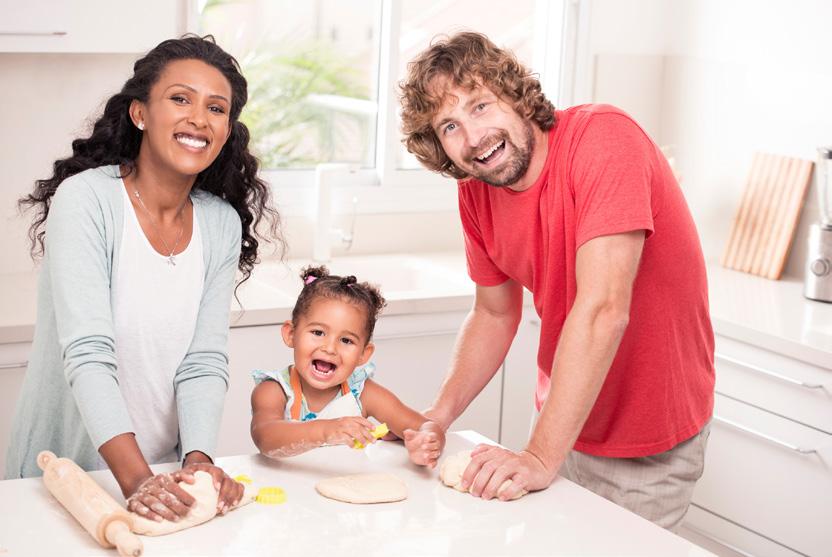

These benefits are available for all, including older folks and those living with disabilities.

“Our residents really enjoy gardening. It creates excitement,” said Richard Carnright, direct service professional at Upstate Caring Partners — previously known as Upstate Cerebral Palsy — which offers programs and services to support people of all abilities. “The greatest thing is they can do is to do something
different.”
At Sitrin Health Care Center in New Hartford, residents also enjoy the activity: “Our gardening program gives our residents a renewed sense of purpose as they maintain the garden,” said Dave Wallace, the organization’s vice president, assisted living services.

Residents at Sitrin have the option of indoor or outdoor gardening. “Daily gardening has been shown to reduce risk factors for dementia by 36%,” according to the University of Washington.

Gardening may be particularly challenging for wheelchair users and those with mobility limitations as conventional garden layouts and designs require a fair share of bending, kneeling and reaching to care for plants.
We gathered tips on how to create an accessible, productive and pleasant garden for older people or those with disabilities.
Carnright is responsible for the 12 adult residents in the Szczygiel residence, Utica.

“The first thing I do is to talk to the individual about his goals in gardening,” said Carnright. “I ask
them what do they want? Flowers, vegetables, fruit?”
“Then I figure out their abilities: Can they walk? Are they fairly stable when they walk, or not? Are they in a wheelchair? Is the ground steady? Maybe they need to be on a concrete sidewalk. Some can walk on the grass. Everybody is unique.”
“I make sure the individual really wants to garden,” he added. “I do whatever it takes to help that person garden, even if it’s just planting a flower into a pot on the table. I grow plants in my cellar; residents transplant them into pots or into the ground.”
Container gardens are ideal for people with different types of disabilities for several reasons. Plants grown in containers can be adjusted to a comfortable height to make gardening easier. In addition, no weeding or heavy tools are needed.
“I designed our gardens to
be handicapped accessible with a four-foot radius turn lane for wheelchairs,” said Cassandra Harris-Lockwood about For the Good Inc. Community Gardens in Utica, a nonprofit operating two community gardens. “The beds are 16” deep and four feet across so they’re very reachable for all.”
At Cedarbrook, Sitrin’s assisted living community, they have raised garden beds for flowers, said Wallace.
Perhaps the most popular method of bringing plants within reach for the wheelchair user or the person who has difficulty bending or kneeling, is raised garden beds. Raised garden beds are typically made of lumber but can also be made of stone, brick, or even less conventional materials like a metal water trough.
In addition, raised garden beds can prevent weed growth making gardening easier for many people. Also you can garden even if the soil is poor because you use potting soil and compost instead of planting in the soil that you have. In addition, a raised garden can be tended without the need for longer tools like hoes and rakes.
Since raised garden beds are completely filled in with soil, wheelchair users must be able to reach across their bodies and work from the side. Plants with far-reaching root systems are ideal candidates for soilfilled raised garden beds. Be mindful to avoid making garden beds that are too deep horizontally, putting the middle portion of the soil out of arm’s length.
There are a number of gardening tools that can make gardening easier for people with disabilities: Those with extendable handles, easy grip tools, kneeling pads, push-button water wands.
The plants themselves actually play a part in making a garden suitable for those with limited abilities. Plants that require a lot of attention can make it difficult to keep up with the demands of a garden. Focus on building a garden with plenty of low-maintenance plants, those that are slow-growing, hardy plants, and drought-tolerant.
If you know someone with a disability, determine whether they might be interested in gardening. You could purchase seeds and a few of the ideas mentioned above and give them a new relaxing hobby, maybe even a new lease on life!
Garden made by residents of an Upstate Caring Partner group home in Utica.My cheese-loving friend has sworn off cheese for a while, saying it’s “too caloric, too fatty, too tempting.”
She’s not the first to go on a cheese moratorium, and I get it: cheese can be all those things. But not always. There are healthy cheeses to be had and recommended ways to eat them.
Swiss cheese, in fact, is one of the healthier cheeses, a designation bolstered by its appearance on nearly every healthiest-cheese list out there.
Why does Swiss cheese make the coveted cut?
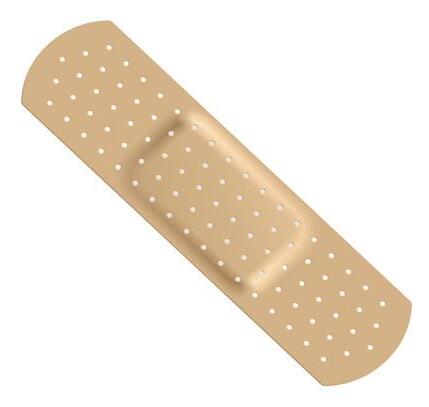

Let’s begin with why Swiss cheese is the cheese for you if you’re watching your salt intake. With only 52 mg of sodium per slice, Swiss cheese has significantly less sodium than most other types of cheese. Considering that the American Heart Association recommends no more than 2,300 mg of sodium a day, you’ll barely make a dent with a few slices of Swiss. Make the same sandwich with American cheese, however, and you’re looking at 900 mg.

Swiss cheese also has more vitamin B12 than any of its peers—a whopping 36% of your daily requirement. An essential vitamin, B12 helps the body produce energy, maintain nerve health and lower blood pressure. Unfortunately, many people— from older adults to vegetarians—are deficient in this important vitamin.

Incorporating a slice or two of Swiss cheese into your weekly diet can help keep your B12 levels up.
Much like milk, Swiss cheese serves up healthy doses of protein, calcium and phosphorous, three nutrients that contribute to the development and maintenance of strong bones. But unlike many milk products, Swiss cheese is super low in lactose, making it a great cheese option for people with lactose intolerance.
On the downside, Swiss cheese has 5 grams of saturated fat per slice, which is about a quarter of the recommended daily amount. Although some research indicates there may be no link between saturated fat and heart disease, experts still advise limiting your intake.
On the plus side, Swiss cheese’s full flavor, along with its slow-to-digest proteins and fats, may help thwart the urge to overindulge.
Anne Palumbo is a lifestyle columnist, food guru, and seasoned cook, who has perfected the art of preparing nutritious, calorie-conscious dishes. She is hungry for your questions and comments about SmartBites, so be in touch with Anne at avpalumbo@aol.com.
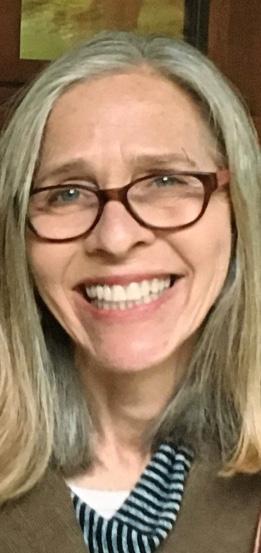

Serves 6-8
1½ tablespoons olive oil
3 cups sliced mushrooms
10-oz box frozen chopped spin-
ach
½ cup chopped onion
1 clove garlic, minced
5 large eggs
½ cup milk
1-2 teaspoons Dijon mustard
1 teaspoon thyme
½ teaspoon salt
¼ teaspoon coarse black pepper
1½ cups shredded Swiss cheese
The majority of Swiss cheese made in America, often called baby Swiss, is only aged for about a month, while traditional Swiss cheese is aged from two months to many years. Because of the shorter aging, baby Swiss has smaller holes, tastes slightly sweet and nutty, and is great for melting. Traditional Swiss, on the other hand, is more expensive, has larger holes, and tastes sharp and tangy.
Preheat oven to 350F. Thaw and squeeze moisture from spinach. Lightly coat 9-inch pie pan with cooking oil; set aside. Heat oil in large nonstick skillet over medium heat. Add mushrooms and cook for 4 minutes, stirring frequently. Add onion and garlic and cook for 4 minutes more, stirring often, until tender. Turn down heat if mixture starts to burn. Remove from heat, transfer to medium bowl and let cool. Gently mix in spinach.
In large bowl, whisk eggs, milk, mustard, thyme, salt, and pepper. Fold in the mushroom mixture and cheese. Transfer to prepared pie pan and bake until set, about 50 minutes. Let stand for 10 minutes. Slice and enjoy!
Sharon Kanfoush Wellness, LLC
Make the decision to FEEL BETTER: Body, Mind & Spirit!
50%Off1stSessionwith Code:TRYITOUT!
50%Off1stSessionwith Code:TRYITOUT!
RESILIENCE MIND - BODY
RESILIENCE MIND - BODY

One-on-One, Small Group & Corporate:
• Yoga Therapy, Meditation & Mindfulness
• Somatic Movement & Pain Self-Management
Fitness
• Personal Training & Wellness Coaching
• Rehabilitative Qigong
• Chair Yoga & Chair Fitness
• Rehabilitative Qigong
In-person or virtual!
In-person or virtual!
Sharon Kanfoush, PhD, C-IAYT, CEI3, ERYT500, ISSA-CPT 2709 Genesee Street, Utica NY 13501 (315) 982-7144 sharonkanfoushwellness@gmail.com sharonkanfoushwellness.org skanfou.gumroad.com
Sharon Kanfoush, PhD, C-IAYT, CEI3, ERYT500, ISSA-CPT 2709 Genesee Street, Utica NY 13501 (315) 982-7144 sharonkanfoushwellness@gmail.com sharonkanfoushwellness.org skanfou.gumroad.com
FREE Consultation!
FREE Consultation!
May is National Nurses Month, a month-long celebration to promote and celebrate nursing. A time to recognize the vast contributions and positive impact our nurses have on the lives of all of us in our community. The positive differences they make.
In this issue, we’ve chosen to honor the work of those nurses in the community who lead, excel and innovate in our local health systems-an essential, vital part of the Mohawk Valley.
Jerome Mendoza Dayao is chief nursing officer for the Mohawk Valley Health System. MVHS serves Oneida, Herkimer and Madison counties with 17 primary care locations, two hospitals, and a third new hospital in downtown Utica to be opened this year. He is in charge of patient care for MVHS, all of the patient care services, nursing, physical therapy, the labs.
Dayao was recognized by Becker’s Hospital Review’ as a “Rising Star of Healthcare Leaders Under 40.” He was also named as one of the 2021 Puget Sound Business Journal’s

Cafeteria workers. Receptionists. Pharmacists. Janitors. Administrators. Physical therapists.
Much has been made of burnout among doctors and nurses, but a new survey has found high rates of work fatigue in nearly every type of job associated with health care.
Physicians, nurses, clinical staff and non clinical support workers in health care all are experiencing substantial levels of burnout, according to a report published recently in the Journal of General Internal Medicine.

For example, the percentage reporting burnout was very similar between nurses (56%), clinical staff (54%), doctors (47%) and non clinical staff (46%).
“Every member of the health care team is really critical to patient outcomes and patient experiences of
care,” said lead researcher, physician Lisa Rotenstein, an assistant professor of medicine at Harvard Medical School. “It’s just really important for us to remember that as we are trying to optimize both patient outcomes and experiences for our workforce.”
For this study, Rotenstein and her colleagues surveyed workers at 206 large health care organizations between April and December 2020, at the height of the pandemic.
The participants included more than 15,000 physicians and 11,000 nurses.
But researchers also surveyed more than 5,000 clinical staff such as pharmacists, nurse assistants, therapists and social workers, as well as more than 11,000 non clinical staff including housekeeping, administrators, lab technicians and food service
40 under 40 list of professionals.
Q: How did you choose to be in this position?
A: I’ve been a nurse for several years; I started as a bedside nurse at Cedars-Sinai Hospital in Los Angeles, California. My background is in cardiac care, caring for patients with heart failure or heart transplants. I was employed at UCLA Medical Center and also at a hospital in Long Beach, California.

I was promoted to charge nurse, then to nurse manager. I became chief nursing officer of a large medical center in Seattle. I completed a
doctorate degree in nursing at UCLA.
Last year, I came from Seattle into MVHS as a consultant. After I worked as a consultant for a few months, they asked me to stay. I saw this position as a great opportunity; an opportunity to be involved in building a new hospital; I could build the nursing culture from the ground up.
Q: How do you balance leadership responsibilities with nursing responsibilities?
A: This position is all leadership; I don’t have the opportunity to do any more nursing practice. I do have an active RN license, so I can still practice.
Q: What is the greatest challenge your nurses face today?
A: The greatest challenge nurses face today is burnout.
Because of burnout, a large number of nurses are overstressed and leaving the profession. A number leave every day. There’s a serious nursing shortage all across the country; it affects a lot of hospitals. At MVHS, we need to use so many contract nurses, temporary nurses.
It’s a challenge to recruit, then retain nurses, and to manage burnout so they don’t leave.
To help combat this challenge locally, I shadow the nurses as they do their jobs. Yesterday, I wore scrubs for three hours, as I shadowed a nurse in the emergency room.
I don’t want to be a leader who sits behind a desk all the time. I want to understand the challenges each nurse is facing. These challenges are like a little pebble in your shoe, each little pebble adds to the stress of the job. It’s important that we deal with these issues, the little things, before they become big.
Q: How do you stay on top of current trends in nursing?
A: To stay current, I’m a member of several professional organizations, have a leadership role in some. I do keep abreast of new policies and trends.
workers.
In addition to high levels of burnout, the researchers also found that many workers intended to leave their jobs within two years-nurses (41%), clinical and non clinical staff (32%) and doctors (24%).
Substantial numbers also reported work overload, including 47% of nurses and clinical staff, 44% of non clinical staff and 37% of doctors.
Even though the survey was conducted during the height of the
pandemic, Rotenstein suspects that things haven’t improved for health care workers in the subsequent years.
“Some of the stresses have persisted as we have moved into a new phase of the pandemic,” Rotenstein said. “There are staffing shortages. There are patients who have delayed care because of the COVID pandemic, and so now we’re seeing an increase in demand for health care. Oftentimes, health care workers are being asked to do more with less.”
Ashely Edwards is chief nursing officer for Rome Health. Rome Health, an extensive healthcare network serving Rome and surrounding communities, partners with institutions and individuals to provide access to a coordinated team of experts.

Q: How did you choose to be in this position?
A: It wasn’t so much that I chose this position as it was the next step for me at Rome Health. Ever since I graduated from nursing school, Rome Health has been my home. I love the opportunity to support our nurses to work to their highest potential, whether that is supporting quality outcomes at the bedside, achieving national certifications, going on for higher education or moving into leadership.
The most exciting part for me is to watch our nurses grow and achieve the goals that they set for themselves. That part of my job is the most rewarding to me.
Q: How do you balance leadership responsibilities with nursing duties?
A: Balancing leadership responsibilities with nursing duties is a challenge but one that I welcome. First and foremost, safe, quality patient care is always at the top of my list. Nothing else comes before that. Whether I’m in a meeting or working on a project, the nursing staff can reach out to me any time when there is a concern about a patient or a situ-
ation that requires some guidance.
In my heart, I will always be a nurse, and I truly believe that leading by example is the best way to inspire and earn the respect from the nursing staff. Being in this position, I refuse to just sit behind a desk and direct my staff. I believe in being there to help support the nurses who work so hard to bring our patients the best care out there, here at Rome Health.
Q.: What is the greatest challenge your nurses face today?
A: There are many challenges that face nurses today. The first would be hiring and retention of staff. This problem is not just in healthcare alone. Many industries are feeling the effects from COVID-19. But Rome Health and its administration has stepped up; our hiring and staff retention is growing at a steady pace — good news for not only Rome Health but this helps to solidify the level of care we expect to provide to our patients.
Another challenge that many people face is the work/life balance. For many families it is one of the toughest parts of having parents who work away from the home. At Rome Health we understand that family is first and our leaders that truly believe and support that.
Q: How do you stay on top of current trends?
A: Staying on top of current trends is part of the job. One of the best ways for me is to remain cer-
Stella Mulyagonja, 24, graduated from SUNY Delhi in May 2022. She currently lives in Oneonta and started working for the Bassett Healthcare Network in September 2022. Mulyagonja tells her post-graduation story about how she got the nursing job. She also tells us what she experienced and learned while working as a nurse for the first time.
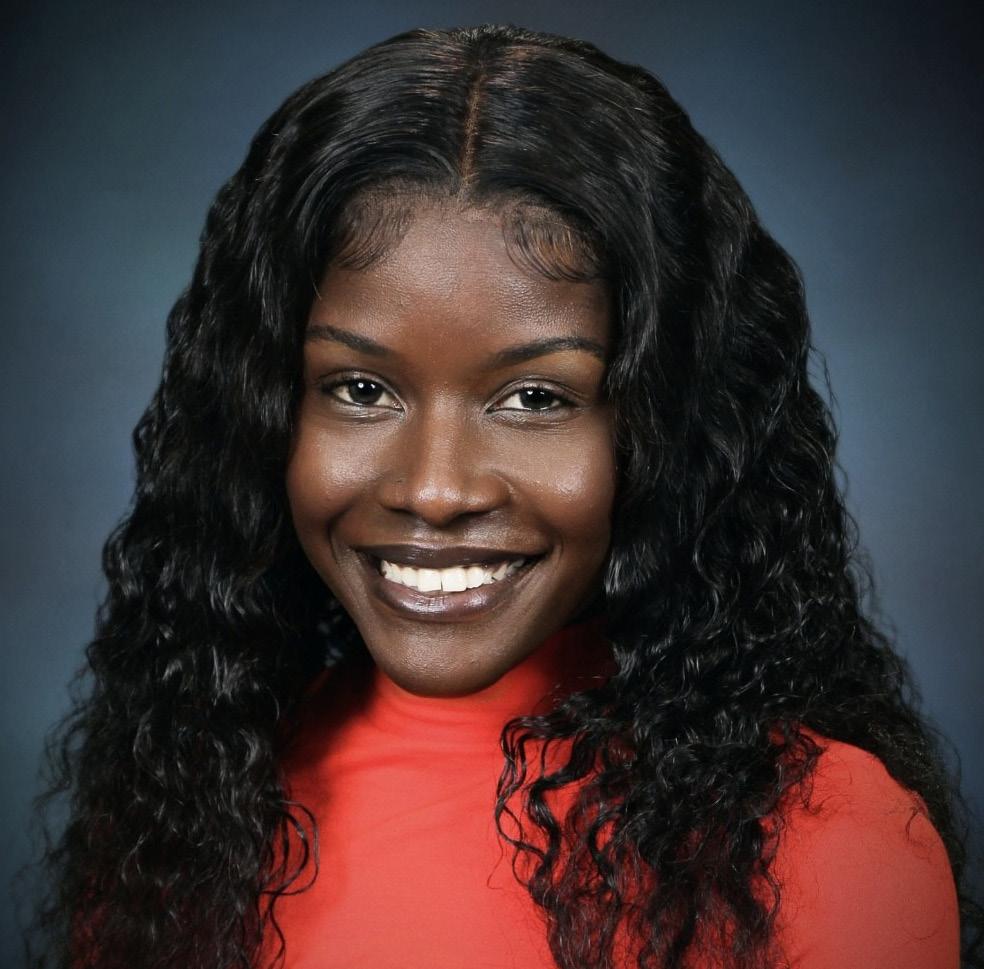
Q: What are your thoughts about working here so far? What was the experience and feeling like working at a medical center for the first time?
A: I like working at Bassett, I mean every workplace has its own ups and downs, but as a new nurse I believe that Bassett is a good educational hospital. Everyone is willing to help you until you’re able to work independently. The people especially on my unit utilize teamwork and that’s what makes those difficult days less stressful.
Q: How did you get this job?
A: I applied for this job through Indeed. But I had done my clinical
rotations while at SUNY Delhi here and I had liked how helpful and friendly everyone is.
Q: How long did it take you, since graduation, to find and get this job? Was the job search easier/harder than you expected?
A: It only took me about two months after passing my NCLEX (National Council Licensure Examination: an exam that nursing graduates must take and pass in order to become a licensed registered nurse, according to The Princeton Review) to get this job. The search wasn’t hard at all even though I expected it to be harder. I applied and got feedback in about two days.
Q: What have you learned while on the job?
A: I have gotten a lot of nursing experience here at Bassett. I feel more comfortable caring for patients compared to when I just got the job. Also, I learned how to work under pressure considering the staffing issues that are going on in
tified with Continuing Education Credits. That’s one of the best ways to learn about the newest trends that are going on or what is on its way.
Another way is for the hospital to reach new and outstanding requirements that earn the hospital certifications such as the Blue Cross Blue Shield Blue Distinction recognition. The hospital has achieved this distinction in our Bariatric, Spine, and Maternity services.
Lastly, I make sure to take time to read evidenced-based and nationally recognized journals. So much is changing in the health field in terms of care, technology, and opinions that I do my best to stay on top of it by reading and talking with other professionals about what they are learning. The healthcare field is evolving every day; I wouldn’t be performing my job correctly if I didn’t make sure I am in the know of the latest trends.
healthcare currently.
Q: How long did it take you to get used to working here? Was it an easy or hard process?
A: It wasn’t an easy process to get used to working here. But the people I work with made it easy for me to get used to it.
Q: What is the one thing you love about this job?
A: The one thing I love about this job is my coworkers. When I just joined, I didn’t think I would fit in. But my coworkers made me feel welcomed and showed their willingness to help and they are always making those bad days better with their sense of humor.
Q: Why nursing? What influenced/ inspired you to get into this field and become a nurse?
A: I chose nursing because when I was a young girl in Uganda, my grandmother, who was my primary caregiver, got a severe stroke that was life-changing for her and me as her granddaughter. I took care of her as a young girl at 12 years old. I was giving her meds, taking her blood glucose and blood pressure, providing personal care and this is where my passion for nursing began. I also like the fulfillment I get after each shift knowing that I have cared for others and helped them feel better.
Q: What do you see as the newest trend in the field?
A: One of the newest trends would be virtual nursing support. When a patient is in need of a nurse, they can push a button, much like the call button that hospitals have and it is answered quickly. The patient likes knowing they will get assistance from someone familiar with their condition who can meet their needs quickly.
Another trend is to continue to support ambulatory and outpatient healthcare. We continue to see this as the first line of healthcare support for our patients. Our goal is to always provide compassionate care to anyone who walks into Rome Health, but to also provide fast and efficient care to all our patients without barriers. That is why we continue to say that Rome Health provides the best care out there. Here.
Q: What tips or advice would you give to the students and/or med school grads who are interested in becoming nurses and/or about to start their new job as a hospital nurse? What will they expect?
A: The advice I can give to those interested in becoming nurses is that they shouldn’t underestimate their ability to do nursing tasks especially as new nurses. They know more than they believe. They should also take their time and not feel overwhelmed because it’s all a learning process in the beginning.
People who want to work as a nurse have many pathways to receive their credentials. Unlike many careers, nursing does not have to cost a lot to enter.
Many people begin nursing in entry-level work, such as a certified nurse assistant (CNA) through a free tuition program with an employer such as a home health company or nursing home.
CNA programs typically run four to 12 weeks. Many organizations offer tuition in part or in full to become a licensed practical nurse (LPN), a credential that requires a yearlong program and next, a registered nurse (RN), an associate degree program that requires passing a state exam before receiving licensure.

Since 2017, RNs are required to complete a bachelor’s degree (BSN) within 10 years, which is a four-year program (including the two years to complete the RN program). Again, most larger healthcare organizations assist with tuition so their employees can comply with this requirement.
The next level is the advanced practice registered nurse, or master of science in nursing (MSN).
This could include a nurse practitioner (NP), clinical nurse leader (CNL), clinical nurse specialist (CNS), certified registered nurse anesthetist (CRNA) or certified nurse midwife (CNM).
Enjoy reading In Good Health newspaper? The paper is free to you but very expensive to produce and distribute. Keep the publication going. Consider supporting it. If you are a reader, please become a paid subscriber. If you’re a nonprofit, a medical practice or organization, consider advertising in the paper. You will get a great deal of exposure since the paper is everywhere for the entire month. We will even design your ad at no charge. For more information, send an email to editor@MVhealthnews.com —
Type “Support” on the subject line.

Beyond these levels are the non clinical specialties such as doctor of nursing practice (DNP), which enables people to serve as a nurse administrator, nursing informaticist, nurse educator or nurse researcher.
With each level comes a higher level of responsibility, scope of practice and salary.
Physician David Page, past president of the Onondaga County Medical Society and provider at FamilyCare Medical Group in Camillus, said that his practice provides some tuition support to LPNs who go back to school to become RNs.
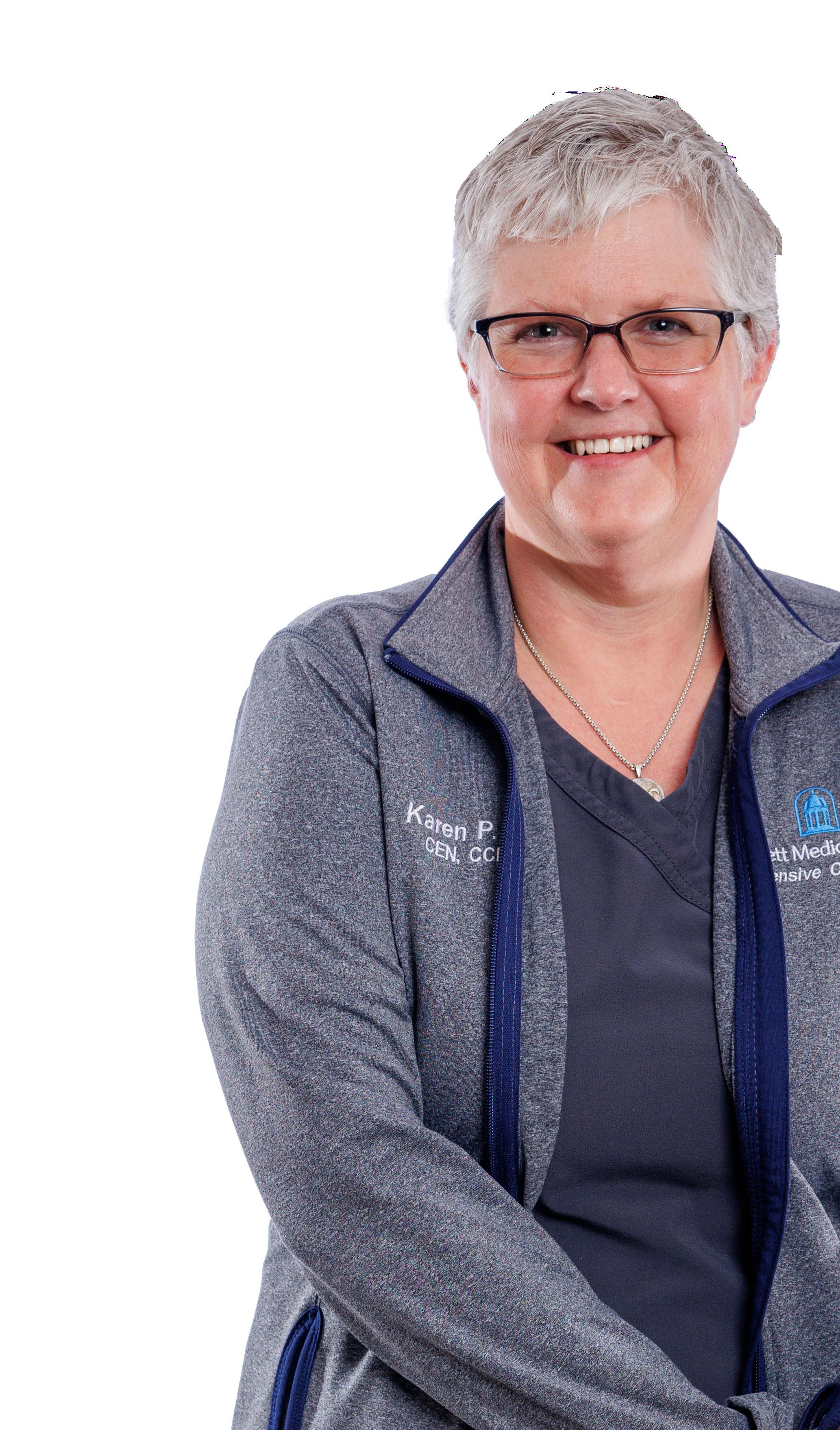
“I’m not sure the nursing shortage will ever go away,” he said. “I’ve been a doctor for 40 years, though COVID exacerbated the shortage.”
He believes that younger nurses want more flexibility in their schedule for juggling childcare and for better work-life balance. Page added that this desire has drawn more
nurses away from the entry level degrees and towards the BSN and NP degrees, along with higher requirements in the field.
“The RNs have to have a BS now,” he said. “It’s been a long time coming. It was a hot topic for a long time.”
Seeking more education can only help nurses in furthering their careers in the future, especially in management education or leadership roles, opportunities which have expanded in nursing. This has prompted another change in nursing that Page has observed: more men in the field.
At the master’s level, nurses can specialize in areas of interest so they can command higher wages and practice more independently. But the DNP is not as important for handson nursing but for roles in leadership and academia.
“We are looking for ways to provide tuition support for those who aren’t working for us yet,” said Scott Jessie, master’s trained nurse and chief nursing officer at Upstate University Hospital.

“We do as much as we can to accept as many students as we can.”
He described Upstate’s program as a “completion degree program” which accepts students from multiple entry points, including people who have worked in nursing or another field and returned to school and those who have stayed in school with the goal of a higher-level degree in nursing.
“We hire nursing students who maybe want to be a PA and have to have clinical hours before they can be accepted,” Jessie said. “They work directly with our staff to see what the work is. They gain a tremendous amount of experience. They can get some money during school, and they get exposure to us. We often hire directly from the program.”
Michael Slattery just loves putting miles on his bicycles.
“I average about 5,000 miles a year,” says the deputy town supervisor of the town of Chili.
The married, 57-year-old grandfather plans to put his love for cycling to use for worthy causes on May 8, when he sets out on an over 1,800 mile jaunt down the Eastern Seaboard to raise money for three nonprofits.


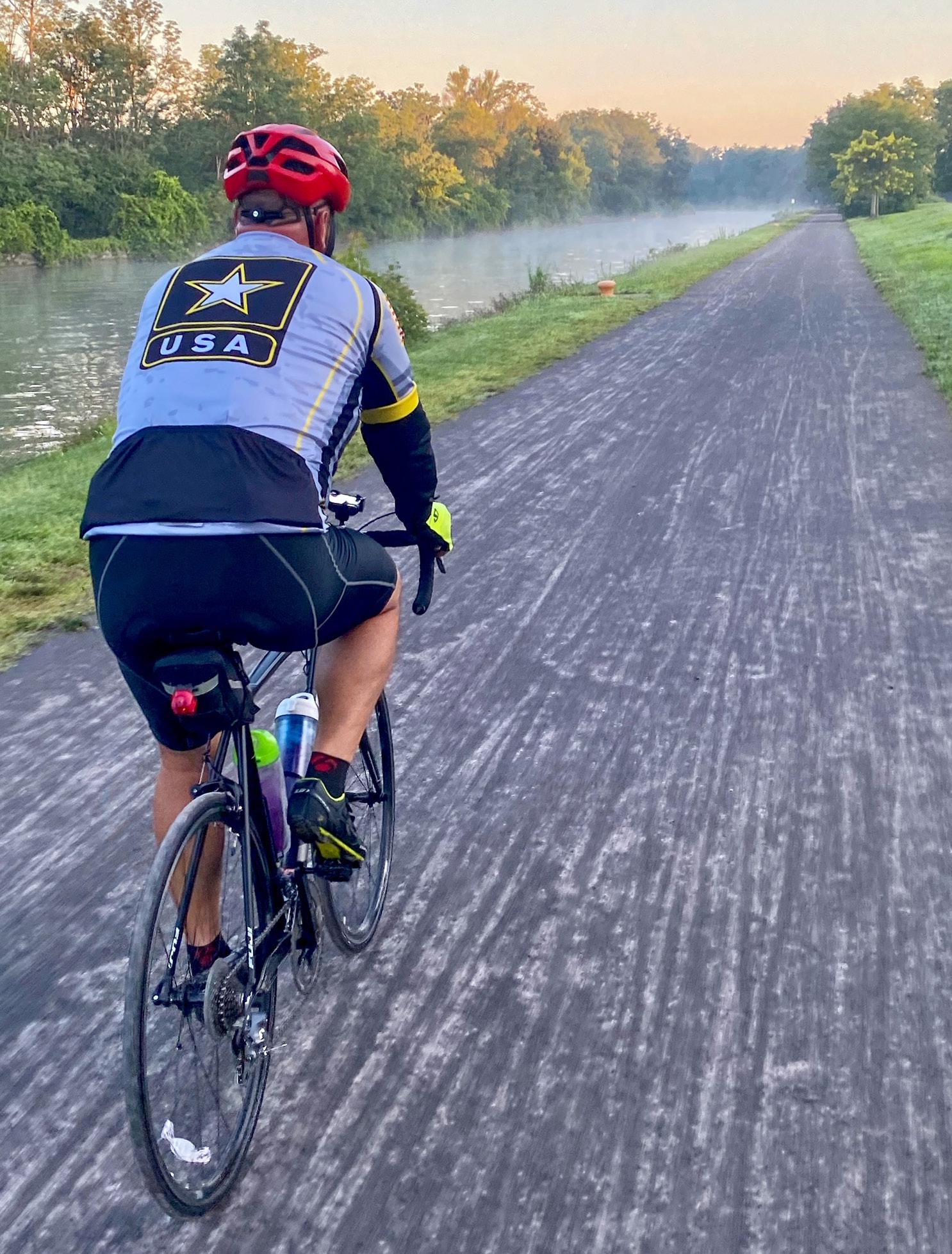
The money Slattery brings in will go to the Pirate Toy Fund, the National Center for Missing and Exploited Children and Honor Flight Rochester.
Slattery plans to start his trip in Charlotte and head south, rolling through Penns ylvania, Maryland, Virginia, North and South Carolina and Georgia before ending up in Florida 25 days later. Along the way, he’ll stop at the Alexandria, Virginia headquarters of the National Center for Missing and Exploited Children (NCMEC) as part of his fundraising efforts.
NCMEC, the largest and most influential nonprofit child protection organization in the U.S., helps find missing children, strives to decrease child sexual exploitation and tries to
prevent child victimization.
“We lead the fight to protect children, creating vital resources for them and the people who keep them safe,” says Edward Suk, executive director of NCMEC’s New York branch.
Slattery says the deaths of two young women, 20-year-old Fairport resident Lisa Eisman and 17-yearold Brittanee Drexel of Chili, made NCMEC’s fight particularly important to him. Both young women died violently.
Eisman was Slattery’s cousin. She and her college roommate, who were students at the State University College at Buffalo, were beaten to death in 1985 while hitchhiking to Fort Lauderdale on spring break. Drexel disappeared in 2009 while on a trip to Myrtle Beach. Slattery coached her for a time when she was on the team Chili Soccer.
“My daughters grew up with Brittanee,” he says. “For me, it’s personal.”
NCMEC aided the search for Drexel.
“We had our local and national case management team involved in cultivating leads with law enforcement,” Suk says. “We also handled
targeted poster distribution, and media outreach through our media team.”
Raymond Moody, Drexel’s killer, was convicted of kidnapping, murder and first-degree sexual in late 2022. He was sentenced to life in prison on one charge and 30 years each on the other two charges. Slattery plans to visit the place where Drexel’s remains were found while en route to Florida, and to visit NCMEC’s Washington offices as part of his fundraiser.
Slattery’s upcoming journey south is just one of the rides he’s taken to raise money for NCMEC. Just last year, he participated in The Ride for Missing Children, NCMEC’s annual fundraiser. Mounting his bike, he pedaled through Buffalo, Rochester, Syracuse, Utica and Albany, covering about 100 miles in each city.
Since 1995, the Pirate Toy Fund has headed to hospitals and other locations in the greater Rochester area to distribute new toys to needy children free of charge. As Slattery pedals along to raise money for the nonprofit, he’ll have a friend at his back—literally. Otto Harnischfeger, the Pirate Toy Fund’s executive director, will follow him down the road in an RV, providing aid.
“I can’t believe he’s doing it,” Harnischfeger says of his good friend. “I ride five minutes and I’m sore. I want to get off the bike.”
Harnischfeger has known the Slattery family since he became
friends with Raymond Slattery, Michael’s father, when the two were on the Rochester Police Department.
“It’s a caring family, they really are,” Harnischfeger says.
The money Slattery raises on his long-distance ride should be welcome.
“Our first year we gave out 300 toys,” Harnischfeger says. “Last year, we gave out over 36,000 toys free of charge, all because of the good nature of the Rochester community.”
In addition to raising money for the Pirate Toy Fund, Slattery sits on the nonprofit’s board of directors.
Six times a year, about 60 veterans and their helpers, called “guardians,” head out of Rochester for a weekend in the nation’s capital, courtesy of Honor Flight Rochester.
“Honor Flight Rochester provides airplane trips for veterans to travel together to see their memorials in Washington DC to receive that long-delayed thank-you that they’d not received many years ago,” says Richard Stewart, the nonprofit’s president and CEO.
The trip to the nation’s capital includes hotel accommodations, tours of the World War II, Korean War and Vietnam War memorials and other important sites and a gala dinner in honor of those who once served their country. The veterans travel free, but their guardians, who are usually family members or friends, have to cover part of the cost of the trip.
Slattery says he plans to stop in Washington this May to accompany an Honor Flight Rochester group as it visits memorial sites. After that, he’ll have lunch with them and get back on his bike.
“I plan on leaving Washington in the early afternoon, so I can get in about 30 miles or so,’ Slattery says.
Honor Flight Rochester, an all-volunteer organization, spends about $500,000 a year on its services to veterans, and is supported by donations. Stewart says the nonprofit is able to cover its current costs, but will have to fund new trips to Washington in the future.
“We have a fly-list of 1,000 veterans,” Stewart says. “If we don’t have money, we don’t fly.”
Slattery’s ride south is just his latest effort to help his community.
He has also raised money for other nonprofits, including Camp Good Days & Special Times, which offers residential camping programs and recreational and support activities to children who are affected by cancer or sickle cell anemia and their families. In addition, Slattery sits on the Chili Town Board.
“It’s a passion for me,” Slattery says. “I enjoy giving back.”
The father of two grown daughters and grandfather of four children recently retired from the Monroe County Department of Transportation, where he was the highway maintenance manager.
For more information about Slattery’s upcoming ride or do donate to his fundraiser, go to: michaelscharityride.com.
For more information on the nonprofits for which he plans to raise money, go to: www.missingkids.org/ footer/about/newyork, www. piratetoyfund.org or https://honorflightrochester.org.
If my life were a book, I’d be in the final chapters.
Not much further to go in the story. Maybe you’re there, too.
My story is packed with unpredictable and weird twists and turns — things that I never saw coming. Maybe your story has those totally unexpected twists also.
That’s what’s most surprising about life, really. The most enormous things happen in the blink of an eye. And suddenly you no longer have the life you had.
Or the changes and the deterioration can be gradual.
Getting old is hard. No one warns you how hard it really is. Challenges are hurled at you or steal into your life gradually. It helps to see them as challenges, not problems.
Your body may fail, probably will in some ways. Your partner may fail you, not by choice. You may find yourself saying “I didn’t plan for my life to come out like this.”
One of the most difficult things that happens is loss. Loss is a part of aging. Loss of one’s partner, of one’s health, one’s friends. Loss of the ability to do the things that bring you purpose and pleasure, even the things you need to do on a daily basis.
My friend, Donald, lost the love of his life; then lost his apartment; next, his car; now he’s in the early stage of dementia, depressed as he struggles alone.
My neighbor, Pat, had stomach issues that required hospitalization. Husband Charlie fell, and now is also hospitalized. I’ve been taking their
beagle, Lily, out for walks.
Losing a partner is devastating. The pain doesn’t go away, but you must find a way around it, say my friends who have lost partners.
The raw, all-consuming shock of early grief will eventually begin to lessen. Gradually, at your own pace, you will adjust to your loss and slip back into a daily routine.
Members of a tribe in South America hunt at night using torches. They live in a rugged area with steep cliffs; their night time journeys are dangerous. They carry torches that cast just enough light to see one step ahead. As long as they walk slowly and keep their eyes on the lighted ground, they keep on the path. By walking just one step at a time, they keep from falling off a precipice.
Grief is like that. Some days you will feel like you are moving through a similarly threatening land. But move slowly, one step at a time.
If you’re going through grief and loss, the following tips may help you:
• Establish a simple daily schedule. A familiar routine can restore a sense of normalcy, make grief more manageable. It lends structure at a time when life seems unfamiliar and out of control.

• Try to get enough sleep, to stay healthy and alert. Sleep helps maintain emotional balance. Lack of sleep weakens your decision-making ability, even your memory.
If you have difficulty sleeping, it helps to go to sleep and get up at the same time every day; our bodies like routine. Avoid napping. Develop a relaxing routine before bedtime;
“A man growing old becomes a child again.”
-Sophocles
Ifeel that to pay constant attention to my growing older is akin to watching paint dry.
The question is: why would I waste my time doing either?
The answer often is more challenging. It can be a conundrum until we take a look with a different perspective.
The paint on the wall will dry and my staring at it won’t make it dry one iota quicker.
Every moment of our lives we are aging. It will continue until our “expiration” date is up regardless of how much I kvetch about it. So, why waste time with such things?
Of course, for many people, myself included, entering into their golden years often can bring a sense of peace and contentment, but on the other hand it can bring dread from facing serious illnesses, financial challenges and loss of loved ones or friends.
Then there are the reminders that your youth has long passed you by.
I am reminded of this most mornings as I wake up, get out of bed and take my first step, tepid at first, as my legs might be hurting from the walk I did on the treadmill the day before. Perhaps my back is bothering me from my workout on my Bowflex or my knees just seem unwilling to bend. With some effort and persistence these annoyances decrease as my morning routine increases.
don’t watch TV or use your computer, cell phone or tablet. Avoid caffeine in the afternoon; its effects linger. Alcohol makes it harder to stay asleep.
• Eat a healthy diet that includes protein in most meals. Inadequate protein intake contributes to many problems.
• Stay active. Move as much as you can. A simple walk or bike ride can you’re your emotions. Don’t ask yourself if you want to go out for a walk, just go.
• Don’t withdraw from others. Stay socially involved to help emotionally, cognitively, and physically. Build a social network through volunteering, clubs and religious organizations.
• Be positive; take pleasure in small things, like the flower outside your window, the smell of your freshly brewed coffee, a hug from a friend. Complaining only makes things worse. Keep your sense of humor.
In his book “Coping with Adversity,” Michael J. Fox says: “It was only when I could accept the fact that I had Parkinson’s disease that I began to think: ‘What haven’t I lost? I haven’t lost my enthusiasm. I haven’t lost my intelligence. I haven’t lost my passion for life, my love of my family, my curiosity.’”
When I’m stressed, I find it helps to stop and identify what’s bothering me. What can I do to change the situation? I need to do what I can to change the situation, then step back. If I can do nothing about the situation, I need to accept it.
During the dark times, you must trudge on, one small step at a time as you find your way. Trust your instinct to help you find you way.
Yes, that is what you have to do sometimes. Just count the moment you are in, just take one step at a time; don’t think ahead.
Barbara Pierce is a retired licensed clinical social worker with many years of experience helping people. If you would like to purchase a copy of her book, “When You Come to the Edge: Aging” or if you have questions for her, contact her at barbarapierce06@yahoo.com.

One such morning after making coffee and setting the table, I found my thoughts drifting off and I get a flashback where I see myself as the runner I was, lean, fast, in my early 20s — and the voice in my head bubbles up and says, “remember when you could run 10 miles like a deer, without even being short of breath?”
Time, an odd construct, each person experiences time in their own way. For many physicists time is not fundamentally real. But for most of us it is very real. If you want to experience the passage of time and see just how old you are or how fast time has flown by, take a few minutes and look at some of those old photo albums you have tucked away over the years.
A while back my wife was rummaging through old picture albums, took one out and came to me and said, “recognize who this is?” It was me in my early 30s. At first, I didn’t recognize myself, then I said, “that can’t possibly be me.”
The other day I was having coffee at my local Dunkin’ Donuts when a friend of mine whom I hadn’t seen in quite some time walked in. We spent the next 10 minutes talking about our aches and pains. When he
left, I thought, “isn’t that old people talk we just had?” And the answer boomed inside my head with a resounding yes!
But I guess I should be grateful.
Several months ago, I had my annual physical. I always get a bit apprehensive when my doctor sits at the laptop in the examination room going over my blood work. He is silent as he moves from page to page. I get a quick glimpse of charts, number formulas and other medical jargon as I look over his shoulder, watching as he scrolls further down. I have no clue what the medical terminology means. He finally turns and says, “So, David, you’re going to be 71 this July?” I say “yes” with some trepidation in my voice. He says, “Perfect bloodwork, actually this is the kind of blood profile I see in my patients who are in their 50s” A big smile comes over my face!
For me, some of the big advantages of having reached my 70s is not having to work full time anymore, not having that dread hanging over me as I slug off to a job I either despise or having to work for a psychotic boss (and I have had a number of them). Really, who needs that stress?
Podos
Don’t let the costs of healthcare costs ruin your retirement. Plan ahead.
Some say healthcare is the biggest retirement expense people fail to plan for. It’s a myth that Medicare takes care of all your health care costs.
“Most of your retirement savings may go toward your medical costs,” according to aarp.org online.
“You might think your medical costs will be taken care of once you qualify for Medicare. But you’ll quickly find that you’re still paying out of pocket, and probably paying much more than you expected.”
Many folks assume Medicare will take care of your medical costs. Most people are overly optimistic about how much assistance Medicare will provide. In reality, it only covers about two-thirds of your costs. It has
major limitations. You can’t rely on it alone to cover your medical care. And Medicare Parts B and D coverage get more expensive each year.
There are several reasons behind the mounting costs of medical care for retired people: In general, people are living longer, health care inflation continues to outpace the rate of general inflation, most retired people have an increasing number of unexpected health challenges as they age.
You can’t afford to go without a plan for how to pay for medical care as a senior. There’s a lot to learn about the world of Medicare. You’ll need to know about Medicare Parts A, B, and D, as well as Medicare Advantage and “Medigap” supplemental insurance plans.
Here are a brief summary of the basic things you need to know: Medicare is health insurance for

people 65 or older. You’re eligible to sign up for Medicare three months before you turn 65. It has three parts:
• Part A (hospital insurance): Helps cover inpatient care in a hospital, skilled nursing facility, hospice, and home health care. There is no charge for Part A.
• Part B (medical insurance): Helps cover services from health care providers, home health care, equipment, like walkers, wheelchairs. There is a monthly charge for Part B; it goes up every year.
• Part D (medication coverage): Helps cover the cost of prescription drugs (including recommended shots or vaccines). You join a Medicare drug plan in addition to original Medicare or a Medicare Advantage Plan. There is a monthly charge for Plan D and the pharmacy will charge for your medication.
There are two main ways you can get your Medicare coverage: Original Medicare or a Medicare Advantage plan.
Original Medicare includes Part A and Part B and you can join a separate Medicare drug plan to get medication coverage (Part D). You can use any doctor or hospital that accepts Medicare. There will be a gap between what Medicare pays and what the services cost, so you can also purchase a Medicare supplement plan from a private company to cover the gap.
A Medicare Advantage plan is a Medicare-approved plan from a private company that offers an alternative to Original Medicare. Your monthly premium will probably be lower. You will need to use health care professionals in the plan’s network. These plans offer benefits that Medicare doesn’t cover, like vision, hearing and dental.
Medicaid is a joint federal and state program that provides health coverage for those with limited income and resources.
As this is a complex process,
much-needed help is available.
“We do really great things,” said Rae Raffle-Maxson, counselor at Catholic Charities of Herkimer County in Ilion.
Herkimer County Office for the Aging contracts with Catholic Charities to offer assistance in health care decisions.
“We help Medicare beneficiaries look at insurance options. There are so many options: we help find the best for you and help you enroll,” added Raffle-Maxson.
“For example, the income limits for a program that saves you on your Medicare premium just went up,” she said. “This means many more people are eligible and won’t have to pay the monthly premium for Part B. The monthly income limits are $2280 for an individual; $3077 for a couple. (Gross income, not net.) This will help with some of the burden of paying for medical care. Also, the income limits for Medicaid also went up in 2023, so a lot more people will qualify for this assistance.”
“Another way we help is to connect people with EPIC (Elderly Pharmaceutical Insurance Coverage.),” she continued. “This helps people pay for prescriptions. The income limits are $75,000 for an individual; $100,000 for a couple.)


Every county in New York has a HIICAP (Health Insurance Information counseling and Assistance Program) such as Raffle-Maxson offers in Herkimer County. HIICAP Counselors offer free information, confidential counseling, and assistance to help solve medical coverage problems.
To schedule an appointment with Raffle-Maxson, call her at 315-8949917.
In Oneida County, HIICAP counselor offer services at North Utica Senior Center and Cooper City Community Center in Rome. To schedule, call the Oneida County Office for Aging at 315-798-5456.
It has also given me a sense of what is important in my life, who I want to associate with, what hobbies I want to take up and what risks I am willing to take as my time horizon for how many years I still have left on this planet inevitably dwindles downwards.
This can be both a blessing as well as a curse. For instance, if the money I have invested tanks, (stock market crash) how long will it take
before I can make up the loss? At 33 who cares? At 70, it’s a big deal. Time now isn’t my friend but my nemesis.
I think of my dad often. He died five years ago just shy of his 98th birthday. He could be a real jokester when he wanted to be. One of Dad’s jokes was to go into a store and when he took his purchase up to the register he would reach into his pocket and take out a small cloth sack which contained a number of washers, ask
the person at the register if he could pay with them, all the while chuckling away, just like a kid. Maybe that’s the secret to a long life well lived as we enter into our golden years: laugh like a child, don’t take things so seriously no matter how bad it might seem, all things pass. So, I guess Sophocles was right. Growing old you become a child again. Now, I just have to find some washers and a cloth sack.
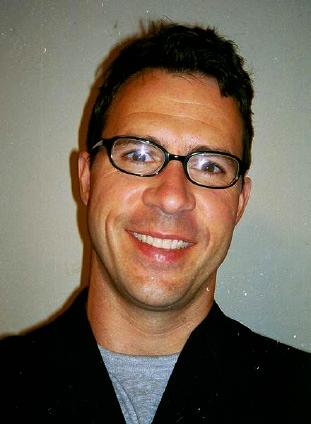
Dear Savvy Senior,
What’s the best way to go about choosing an assisted living facility for my 86-year-old father? Since mom died last year, his health has declined to the point that he can’t live at home anymore but isn’t ready for a nursing home either.
Searching Susan

Dear Susan,
If your dad needs help with things like bathing, dressing, preparing meals, managing his medications or just getting around, an assisted living facility is definitely a good option to consider.
Assisted living facilities are residential communities that offer different levels of health or personal care services for seniors who want or need help with daily living.
There are nearly 29,000 assisted living communities (also called board and care, supportive-care or residential-care facilities) in the U.S. today, some of which are part of a retirement community or nursing home. Most facilities have anywhere between 10 and 100 suites, varying in size from a single room to a full apartment. And some even offer special memory care units for residents with dementia.
To help you choose a good assisted living facility for your dad, here are some steps to follow.
• Make a list: There are several sources you can turn to for referrals to top assisted living communities in your area including your dad’s doctor or nearby hospital discharge planner; friends or neighbors who’ve had a loved one in assisted living; or you can do an online search at Caring.com.

• Do some research: To research the communities on your list, put a call into your long-term care ombudsman. This is a government official who investigates long-term care facility complaints and advocates for residents and their families. This person can help you find the latest health inspection reports on specific assisted living facilities and can tell you which ones have had complaints or other problems in the past. To find your local ombudsman visit LTCombudsman.org.
• Call the facilities: Once you’ve identified a few good assisted living facilities, call them to see if they have any vacancies, what they charge and if they provide the types of services your father needs.
• Tour your top choices: During your visit, notice the cleanliness and smell of the facility. Is it homey and inviting? Does the staff seem respon-

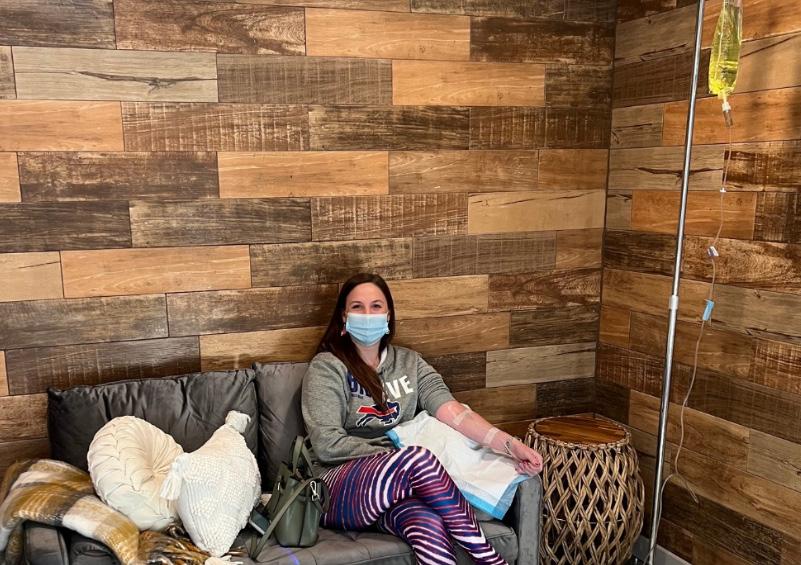
sive and kind to its residents? Also be sure to taste the food, and talk to the residents and their family members, if available. It’s also a good idea to visit several times at different times of the day and different days of the week to get a broader perspective.
On your facility visit, get a copy of the admissions contract and the residence rules that outline the fees (and any extra charges), services and residents’ rights, and explanations for when a resident might be asked to leave because their condition has worsened, and they require more care than the facility can provide.
Also, find out their staff turnover rate, COVID-19 infection-control procedures and if and when medical professionals are on site. To help you rate your visit, Caring.com offers a checklist of questions that you can download and print at Caring.com/ static/checklist-AL-tour.pdf.
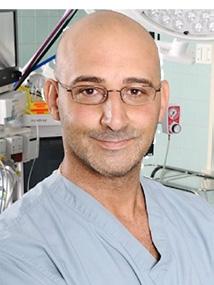
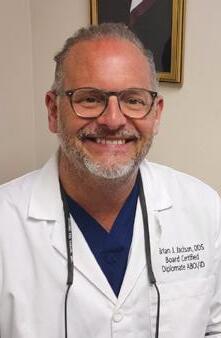
• How to pay: Monthly costs for assisted living ranges anywhere from $2,500 to $6,000 or more, depending on where you live, the facility you choose, and the services provided.
Since Medicare does not cover assisted living, most residents pay outof-pocket from their own personal funds, and some have long-term care insurance policies.
If your dad has limited financial resources and can’t afford this, most states now have Medicaid waiver programs that help pay for assisted living. Or, if he’s a veteran, he may be able to get funds through the VA’s Aid and Attendance benefit. To find out about these programs, ask the assisted living facility director, or contact his local Medicaid office (see Medicaid.gov) or the regional VA benefit office (800–827–1000).
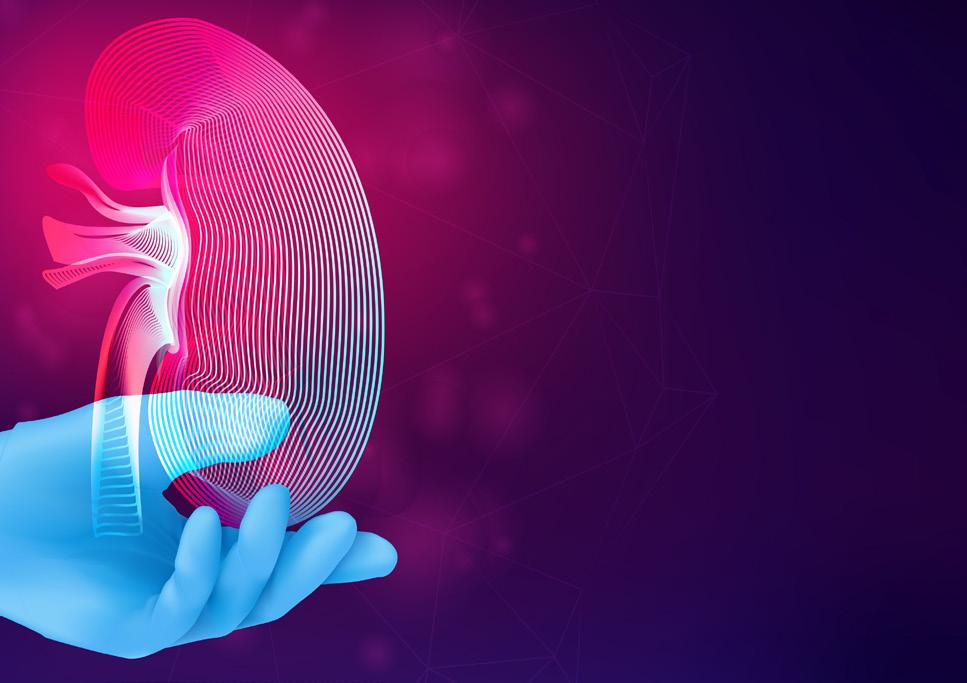
Assisted living facilities are residential communities that offer different levels of health or personal care services for seniors who want or need help with daily living.
local access to information and assistance about long term care services and supports… regardless of age, income, or payor source. Get help with community services/supports designed to help people remain healthy and independent for Older Adults, Adults or Children with Disabilities as well as their Families and Caregivers.
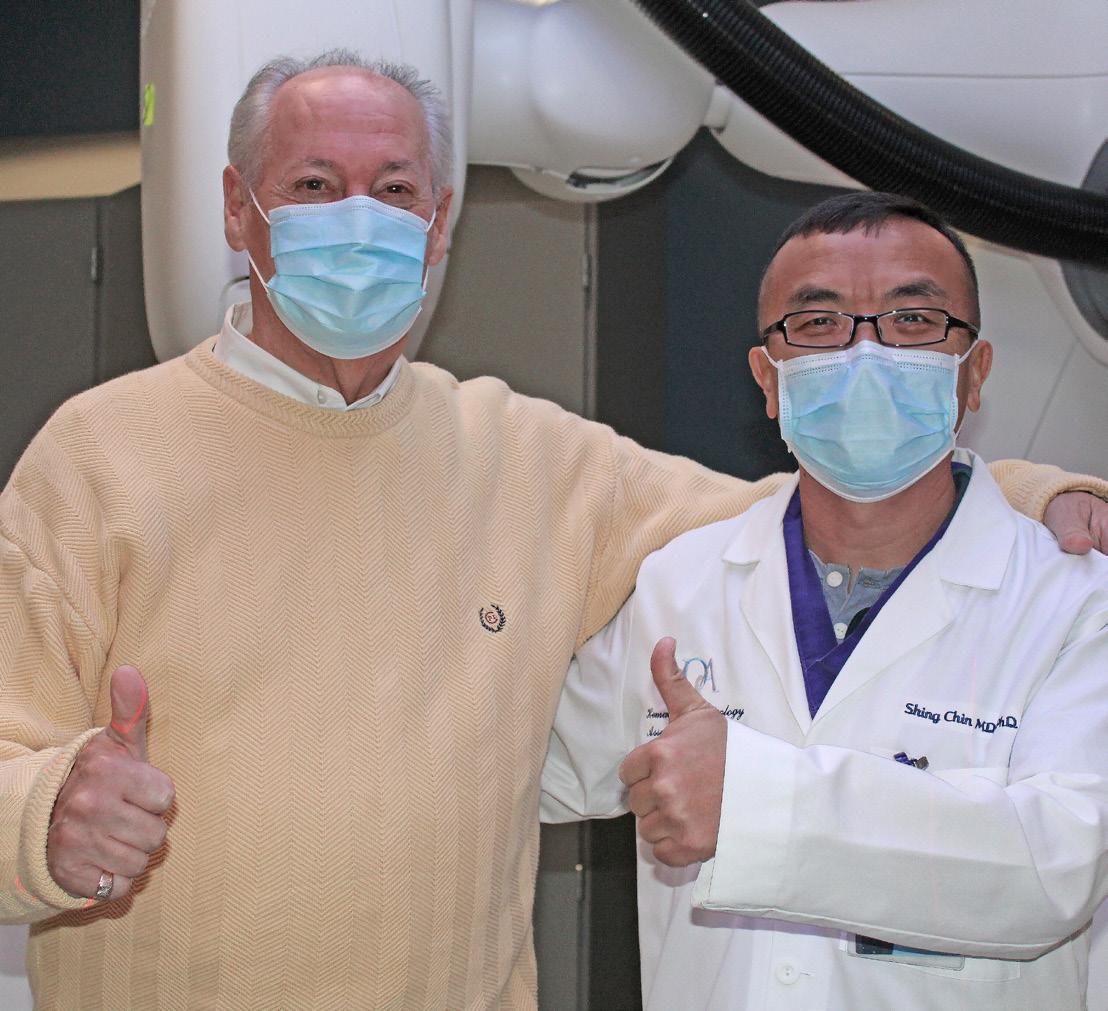
Frank chose non-surgical CyberKnife® at HOA –offering 5 treatments instead of 35!

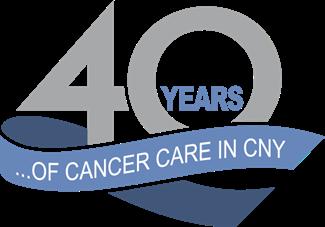
“The original diagnosis was to treat my prostate cancer with seven weeks of radiation, five days a week. I was kind of upset that I was never given the option of CyberKnife,” said Frank. “The precise radiation achieved by CyberKnife, far fewer treatments, and the personalized care I received from Dr. Chin and his team made my decision an easy one. Better, the treatment was a real success!”
To hear more of Frank’s story and learn if CyberKnife is right for you, visit hoacny.com
Wellness is about actively nurturing your physical, mental, emotional, and spiritual health and making choices that promote balance in all parts of your life. Here are some tips for keeping all of you healthy.
1. Physical Wellness: Exercise regularly, eat more fruits and vegetables, reduce processed and sugary foods and get more sleep.
2. Emotional Wellness: Maintain a positive attitude, take time for self-care (meditation, reading, or quiet relaxation), and practice gratitude.
3. Social Wellness: Keep in touch with friends and family. Connect with others by joining a club, starting a new hobby or volunteering.
4. Intellectual Wellness: Take an online or in-person class, read a book on a new topic, challenge your mind with puzzles or games.
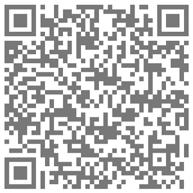
Learn more about taking care of yourself at ExcellusBCBS.com/PreventiveCare
5. Spiritual Wellness: Connect with your inner self. Practice mindfulness by focusing on the present moment. Reflect on your personal values and beliefs.
6. Environmental Wellness: Boost wellbeing by spending time in nature. Care for our planet by reducing waste, composting or recycling.
7. Occupational Wellness: Seek professional development, strive for work-life balance, connect with coworkers.


